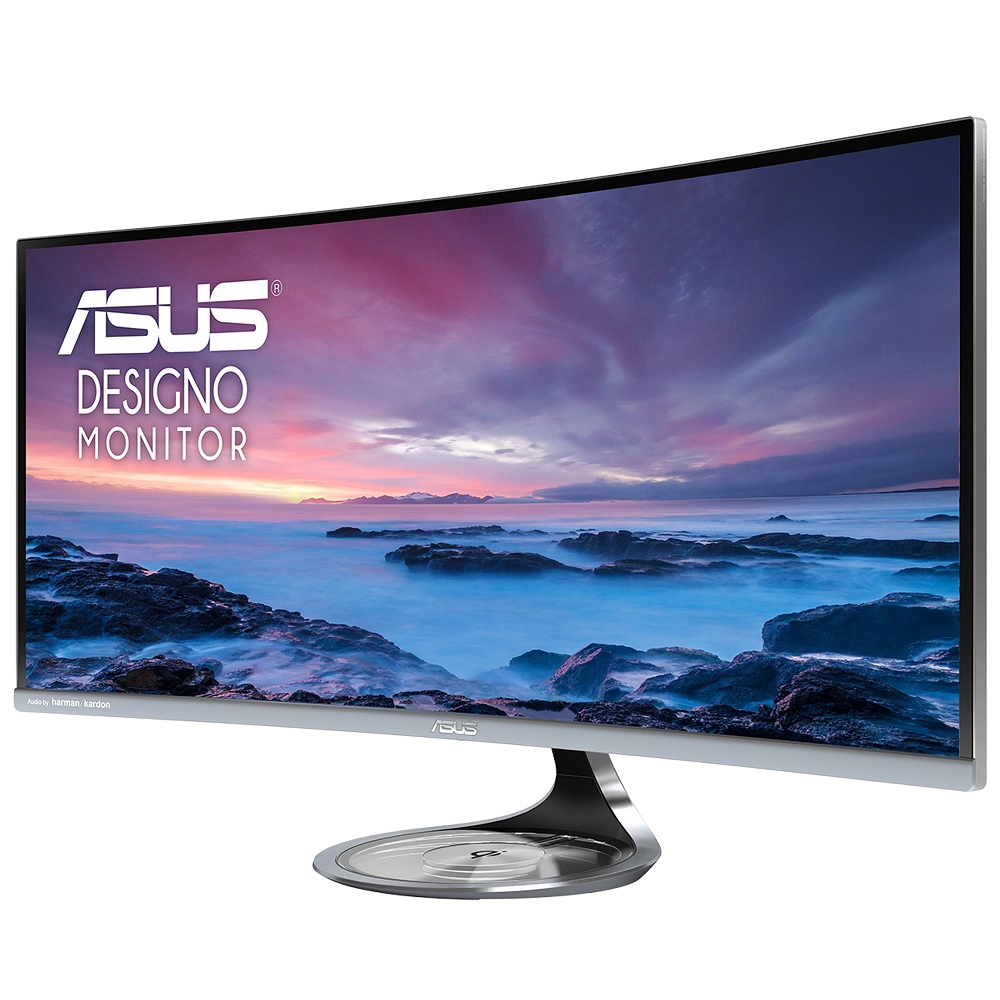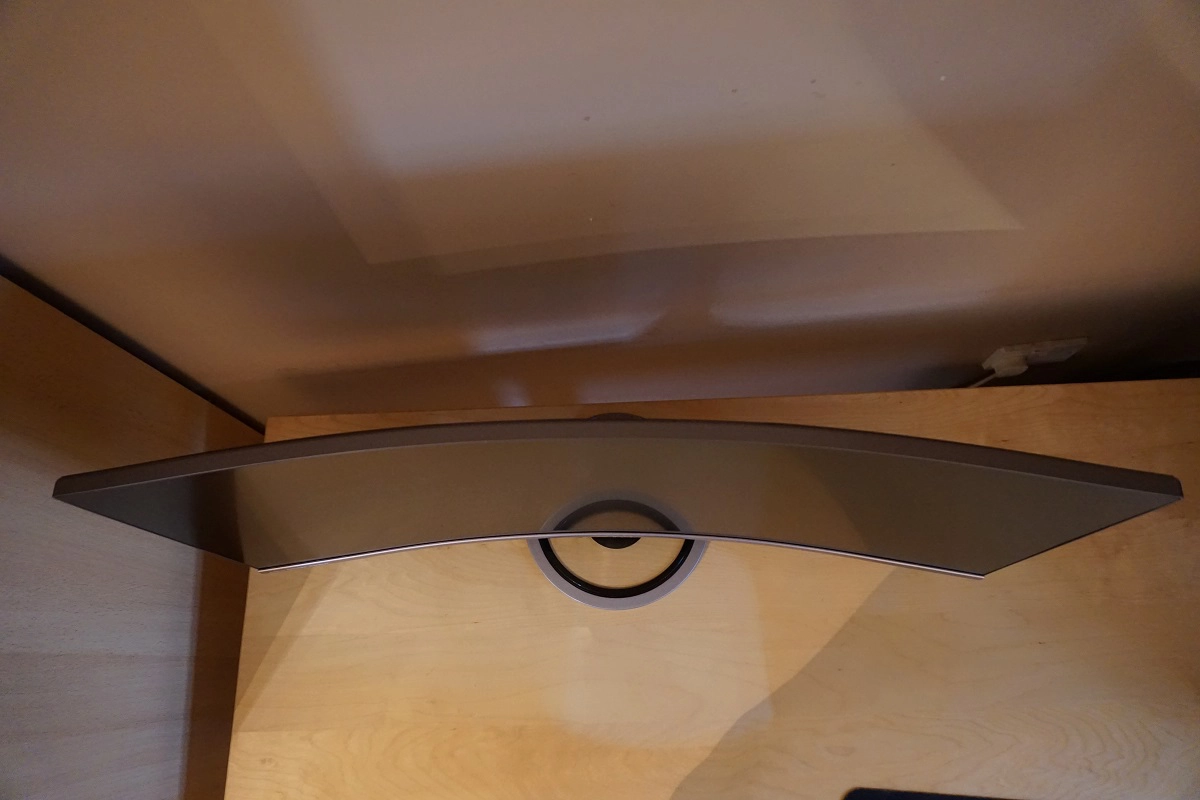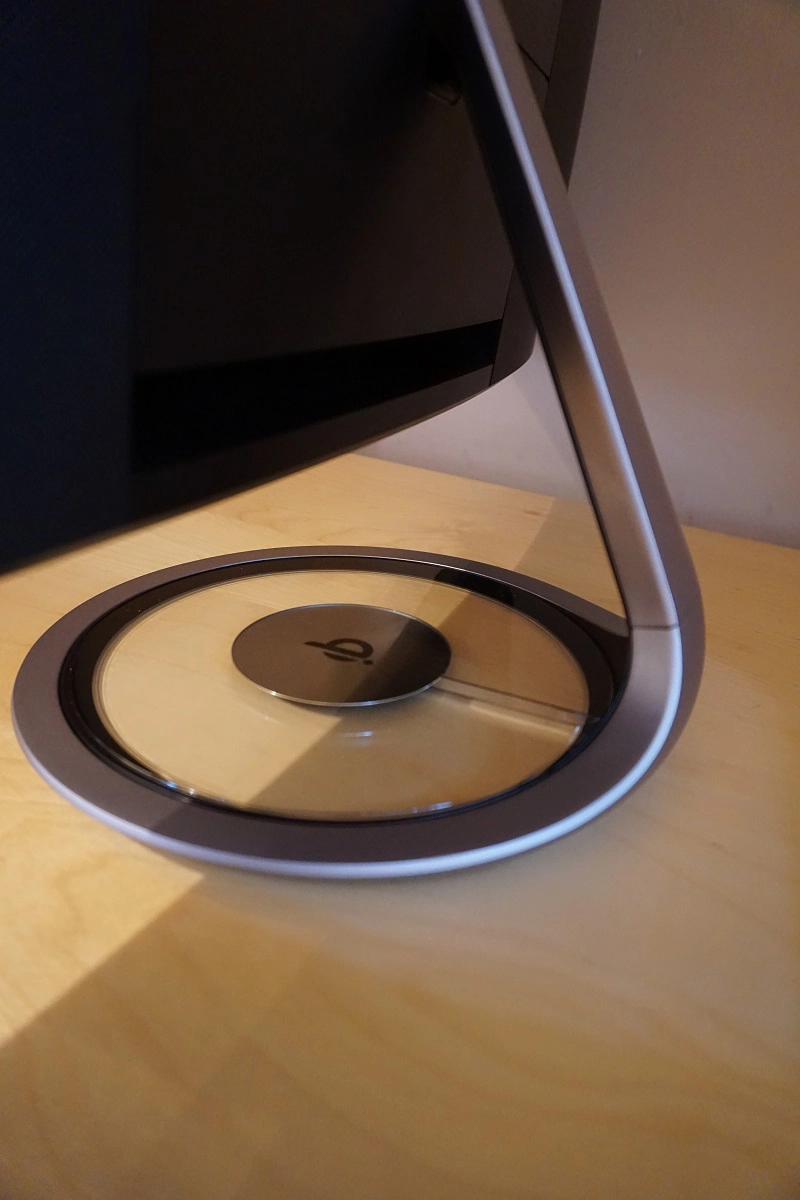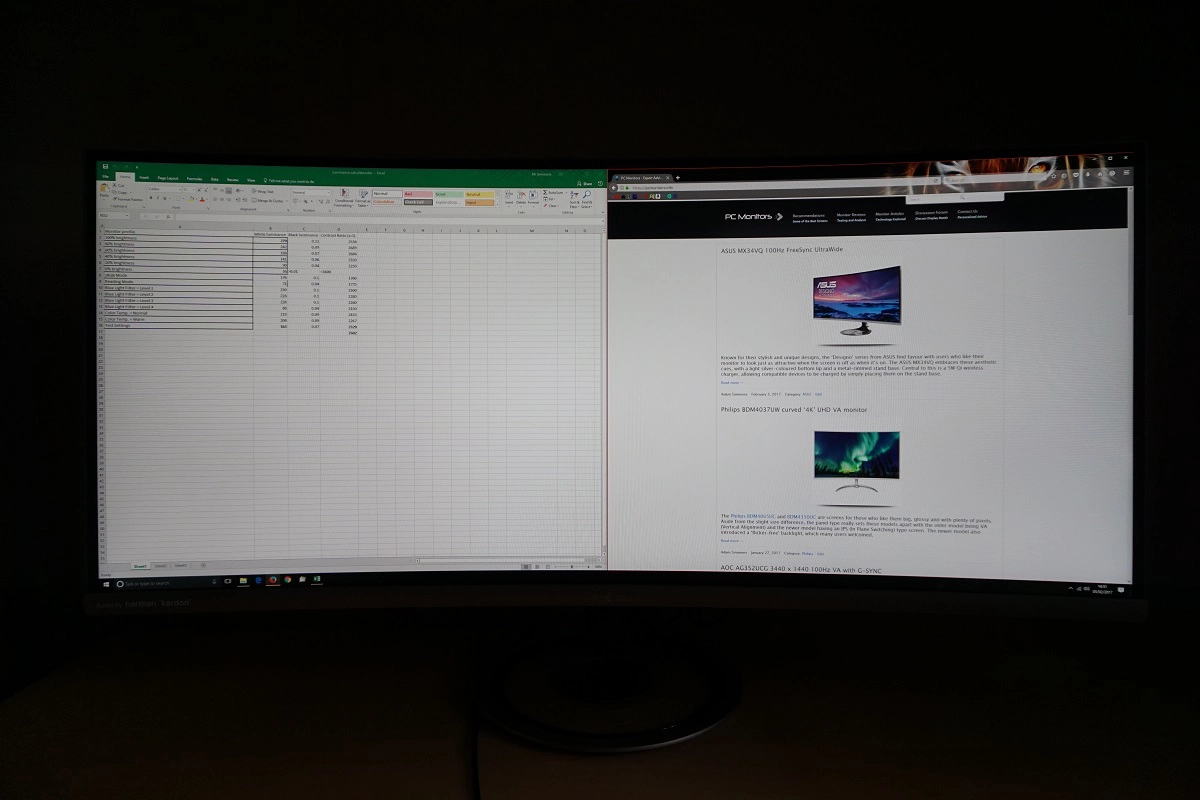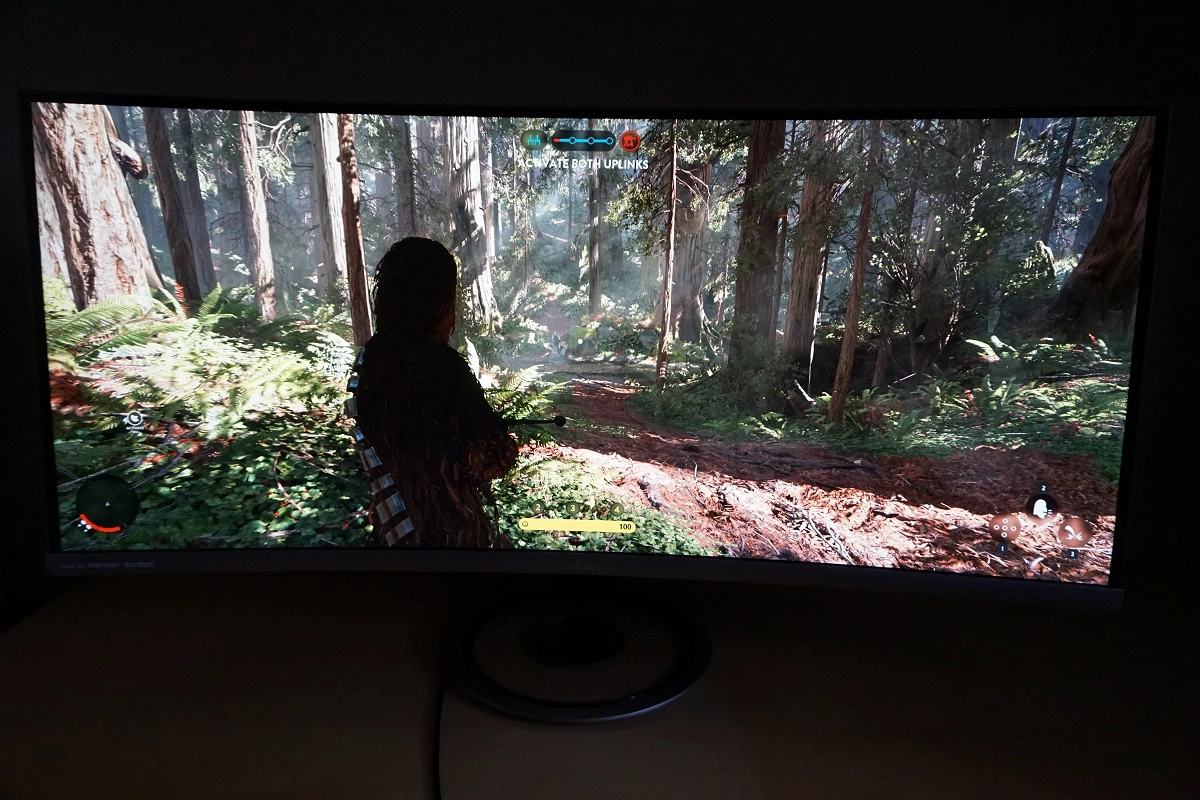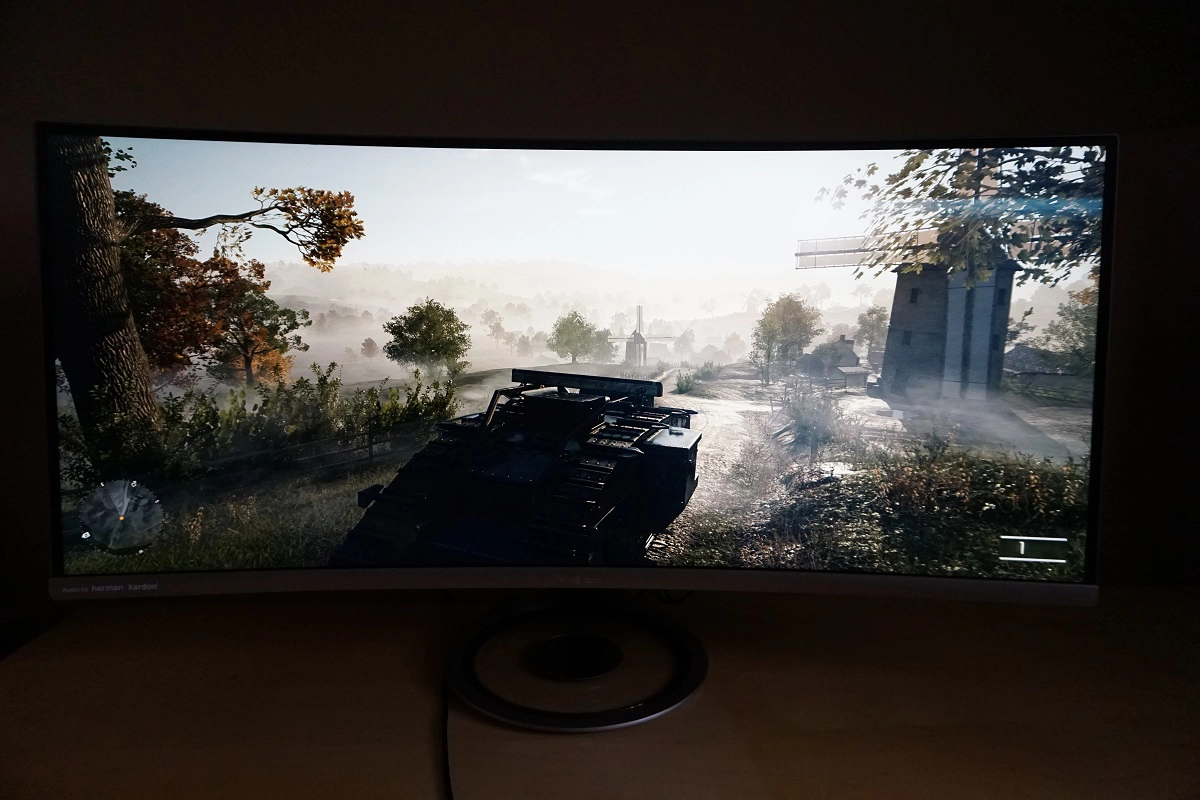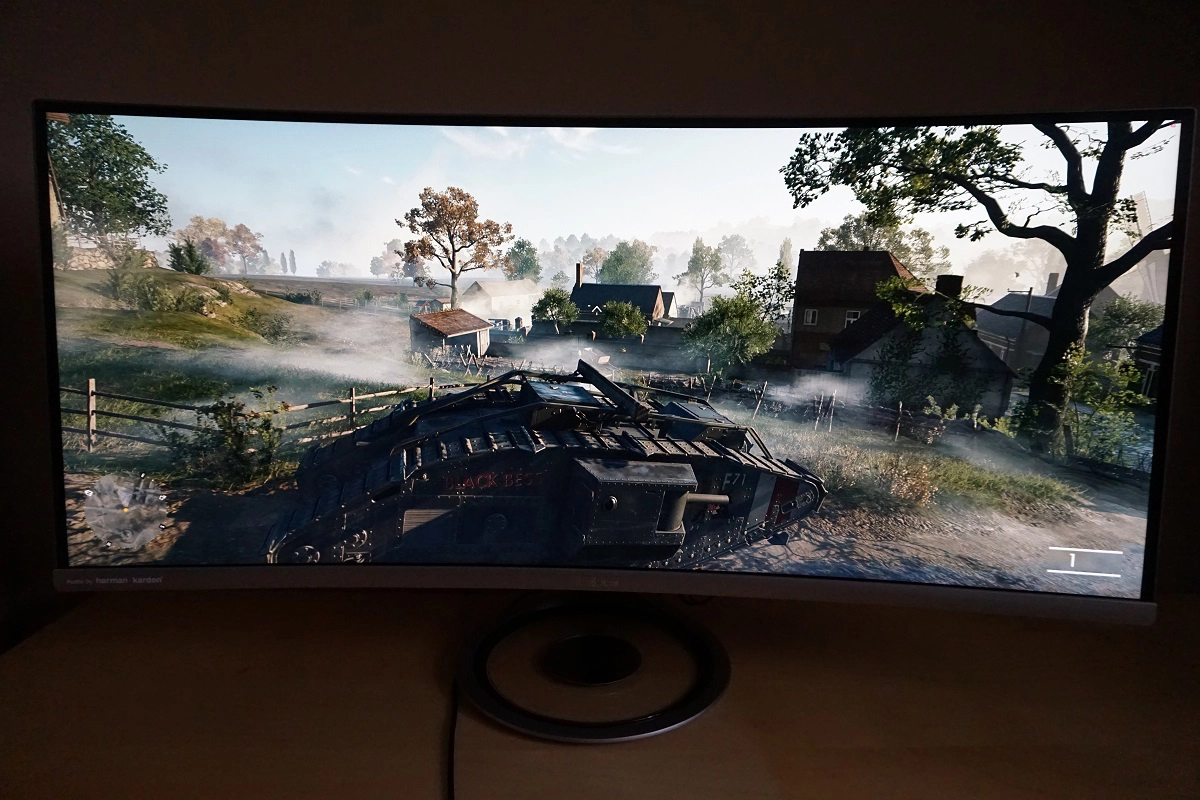Author: Adam Simmons
Date published: February 9th 2017
Table of Contents
Introduction
The ASUS Designo series has won over many fans due to the head-turning styling. This tends to look attractive and artistic rather than unusual and ‘funky’. Most models in this series are restricted to 60Hz, something that puts many gamers off. The ASUS MX34VQ belongs to this series, but brings with it a 100Hz refresh rate and support for AMD FreeSync (via Adaptive-Sync on the monitor). The monitor also embraces a few other recent trends, such as employing a curve to the screen and integrating a 5W Wireless Qi charging unit into the base. We see whether this monitor looks as appealing when switched on as it does when it’s off, putting it through its paces in our usual gauntlet of tests.
Specifications
This model features a 100Hz 34” Samsung SVA (‘Super’ Vertical Alignment) panel, with a resolution of 3440 x 1440 and curvature of 1800R. True 8-bit colour is supported and a 4ms grey to grey response time is specified (take with a dose of salt). Some of the key ‘talking points’ of the specification have been highlighted in blue below.
Features and aesthetics
The front of the monitor shows off the sort of stylish aesthetic associated with the company’s Designo monitor range. The top and side bezels have a dual-stage design, with thin black panel border and very slim hard outer silver plastic components. They measure ~8.5mm (0.33 inches) including both components. The bottom bezel is silver-coloured matte plastic, ~19mm (0.75 inches) including the tiny sliver of panel border visible here. The screen uses a light matte anti-glare surface and features a 1800R curve. Both elements are explored later on.
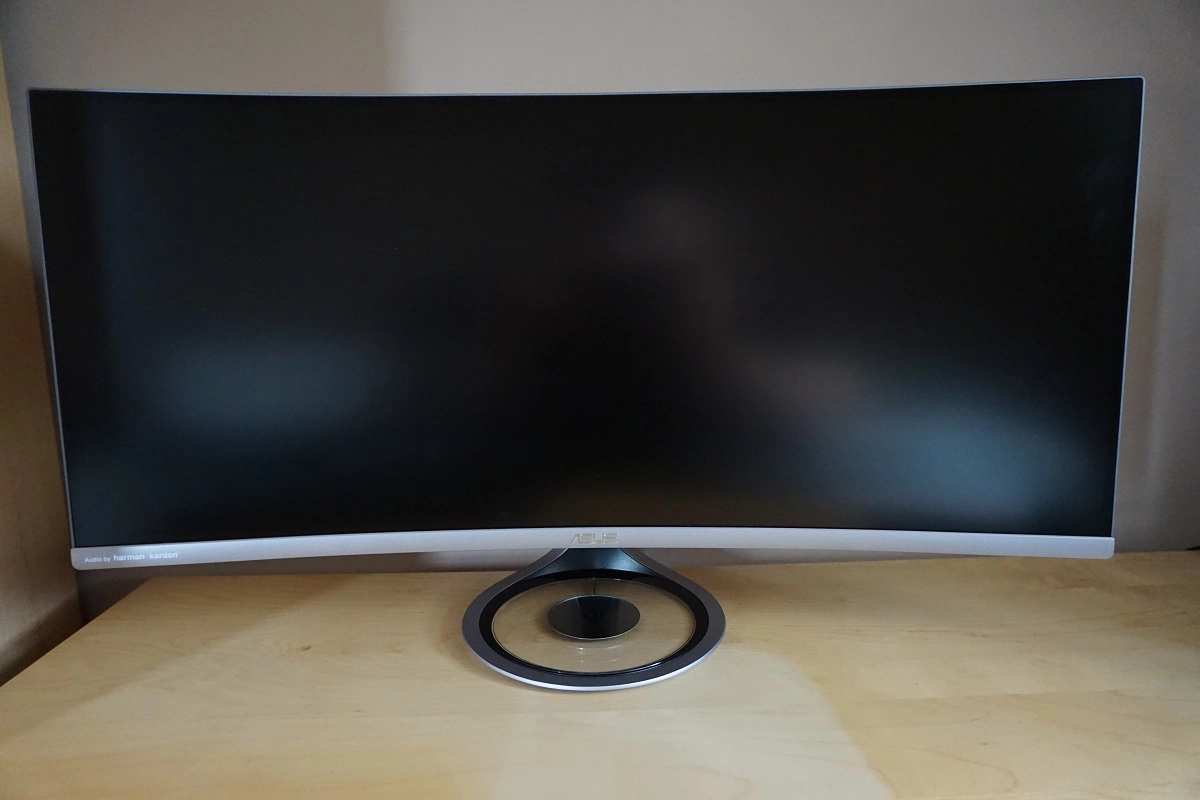
The stand base is also interesting as it features a 5W Qi wireless charger, surrounded by a transparent plastic plate with a powder-coated metal rim. You simply place a Qi wireless charging capable device here, such as the Samsung Galaxy S7 shown in the image below, and it will charge automatically. There is no need to press anything on the monitor itself (or in most cases the device you’re charging) to activate the charging process. It won’t win any competitions for charging speed and it’s certainly slower than ‘fast charging’ using a cable, but the idea is that you just keep your phone there whilst you’re using the monitor (or even when you’re not) and it will keep the battery topped up. When charging is active the base will light-up turquoise, with LEDs located beneath the central rim reflecting off the outside of the plastic circle. This so called ‘aura lighting’ pulses on and off when the device is charging and stays on continuously if the device is fully charged but placed on the plate. If you find this effect annoying you can disable it in the OSD (On Screen Display) as demonstrated shortly.
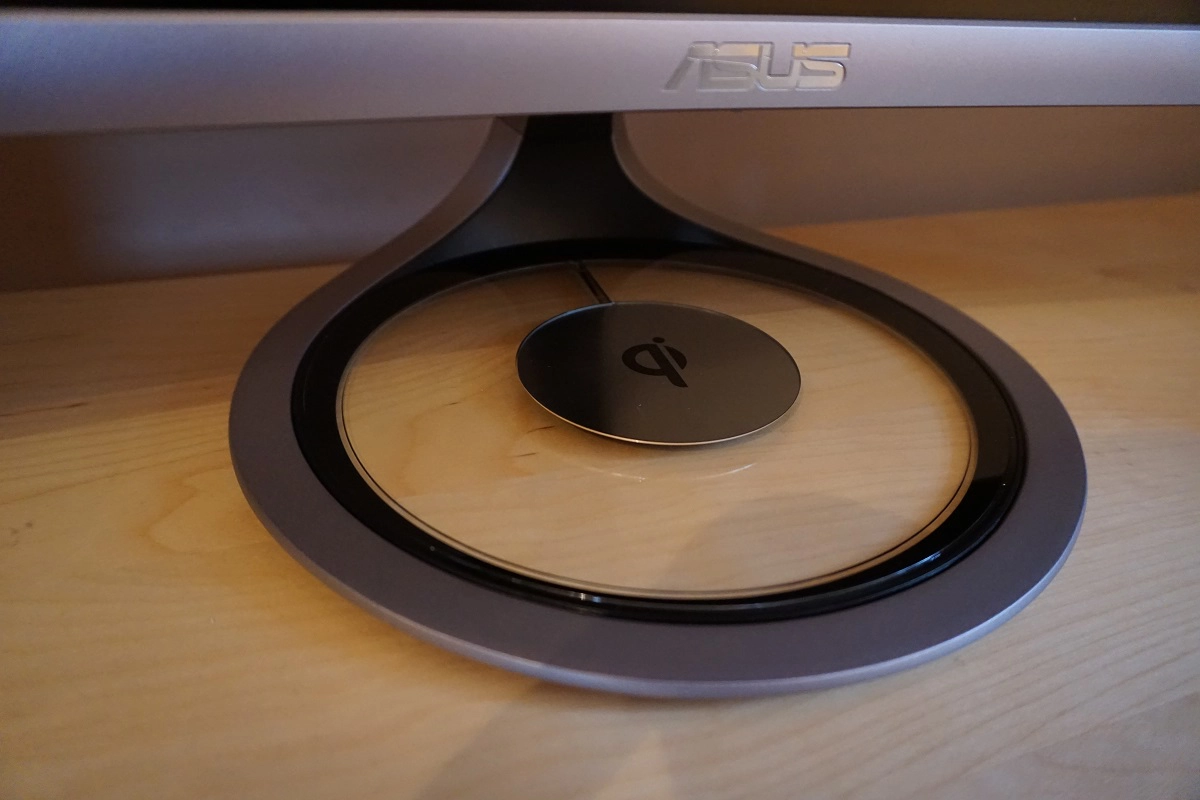
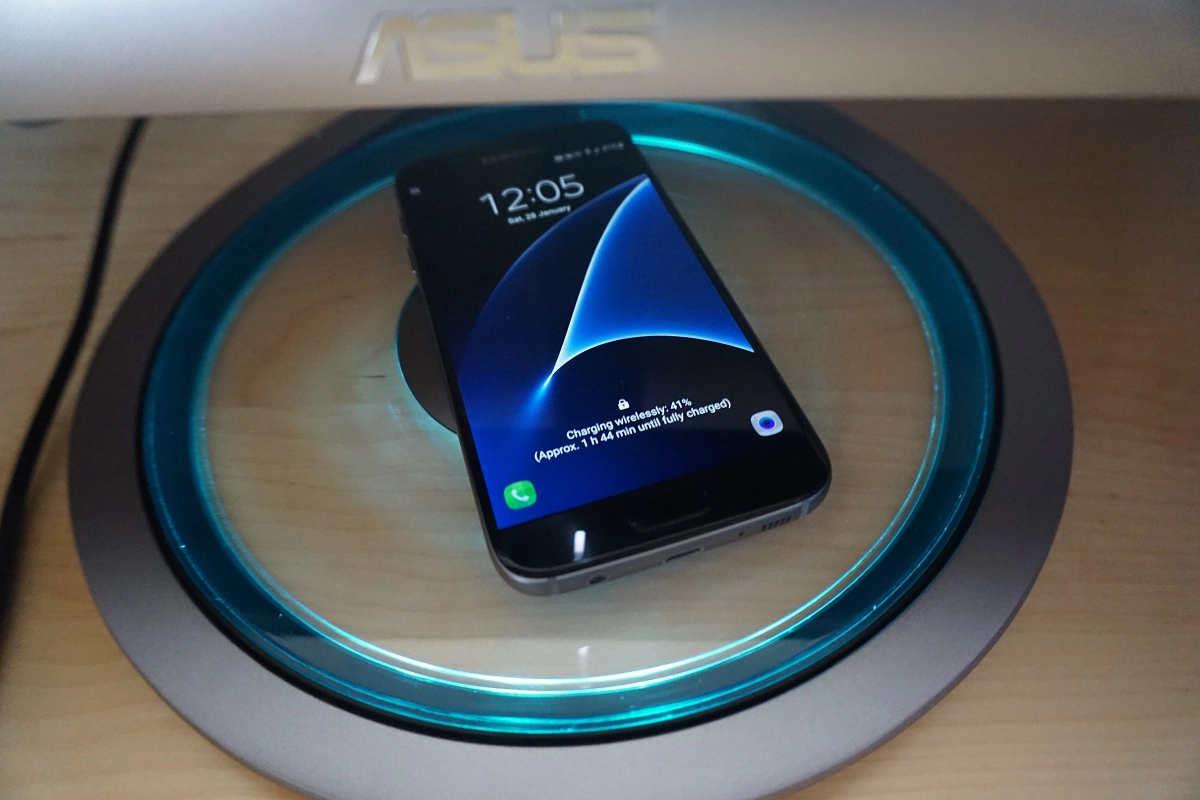
The OSD is controlled primarily by a joystick (JOG button) found under the central ASUS logo. There is also a button either side of this and a downwards-facing and fairly dim white power LED. This glows amber when the monitor is on standby (loses signal from the computer) and turns off when you switch the monitor ‘off’. This LED is not actually visible from a normal viewing position as it is neatly tucked away, you’d have to lower your head to see it. The image below shows the control system and power LED, whilst the video below runs through the functionality of the OSD and the Qi charger.
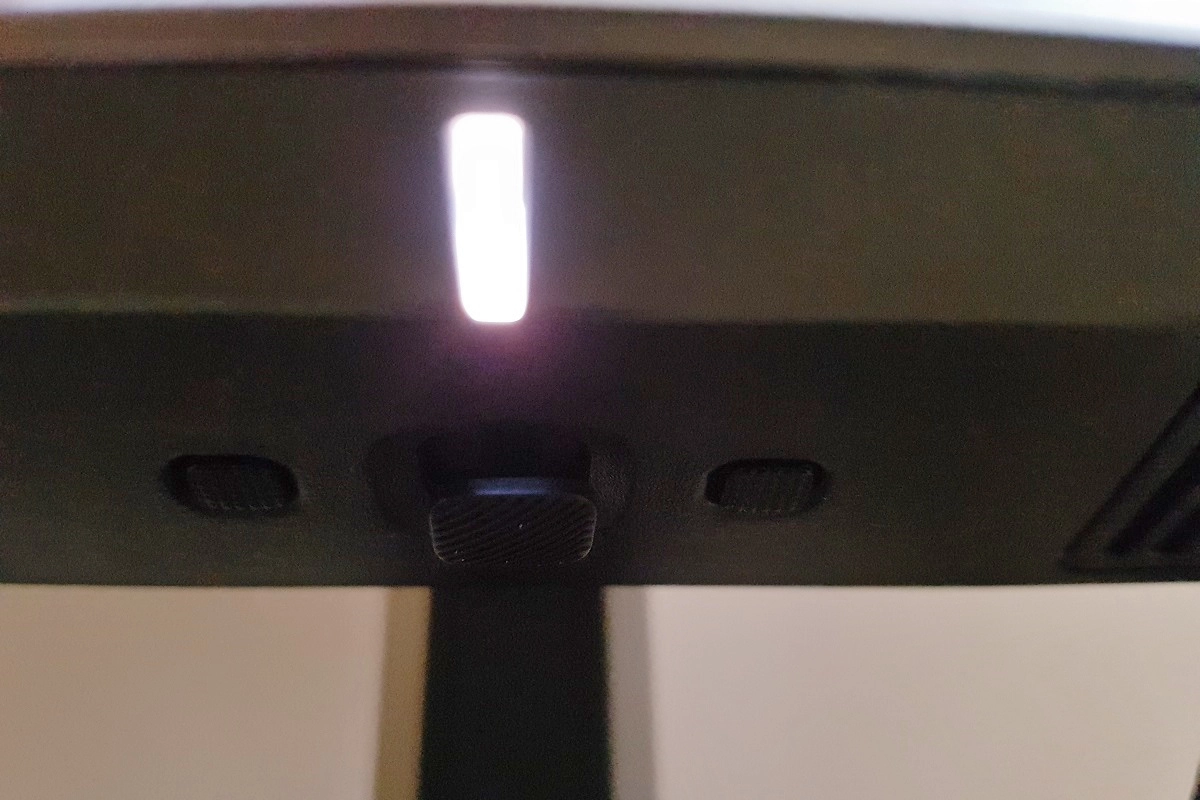
From the side the monitor’s curve and the stand can be seen more clearly. The monitor is ~18mm (0.71 inches) at thinnest point, at the very edge, but quickly bulks out as you move further inwards. The total depth of the monitor including stand is ~240mm (9.45 inches). The stand neck is silver matte plastic at the rear and sides and black matte plastic at the front. The included stand offers tilt (5° forwards, 15° backwards) as the only ergonomic flexibility. The bottom of the screen sits ~93mm (3.66 inches) above the desk with the top of the screen ~456mm (17.95 inches) above the desk. So whilst not as low down to the desk as it could be, a height-adjustable stand would’ve been a nice feature.
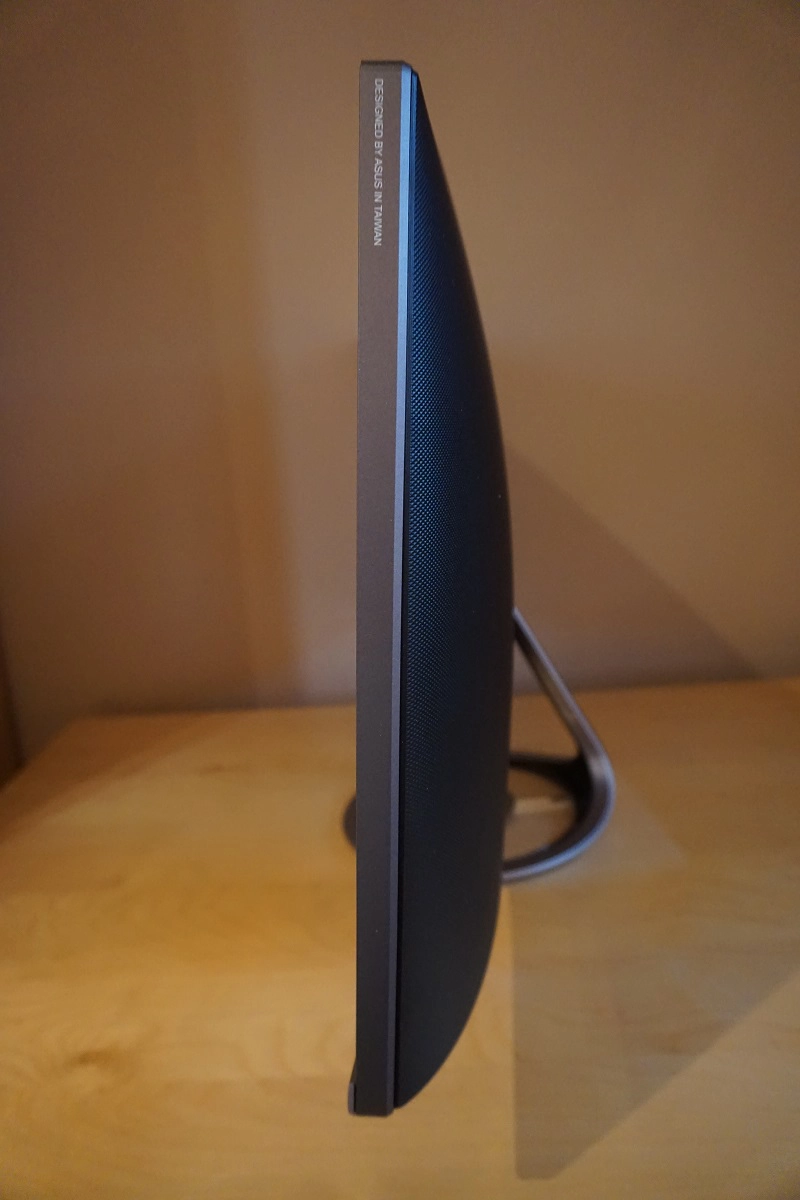
The rear of the monitor features matte black plastic with a textured appearance towards the outside and a smoother appearance on the inside. The included stand is an integral part of the monitor (due to the Qi charger, undoubtedly) so it can’t easily be removed. And there is no provision for alternative mounting such as VESA holes anyway. Beneath the stand attachment ports there is a detachable port cover that houses the various down-firing ports of the monitor. These are; DC power input (external ‘power brick’), 3 HDMI 2.0 ports (supports Adaptive-Sync), DP 1.2a (supports Adaptive-Sync) and a 3.5mm headphone jack. There is also a K-Slot towards the bottom right. Note that both DP 1.2 and HDMI 2.0 support 3440 x 1440 @ 100Hz on this monitor. For AMD FreeSync to function correctly, you need to use either DP 1.2a or HDMI 2.0 on a compatible GPU. An HDMI and DP cable is included along with the necessary power adaptor as standard accessories.
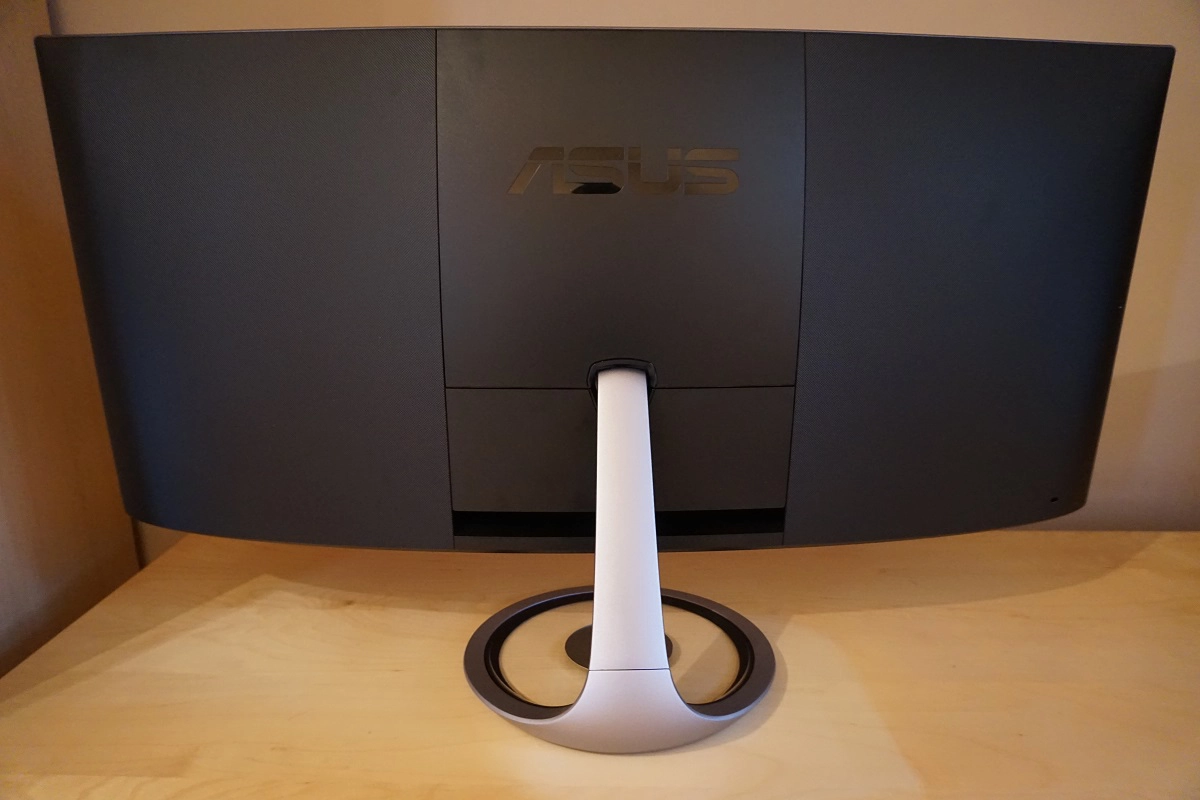
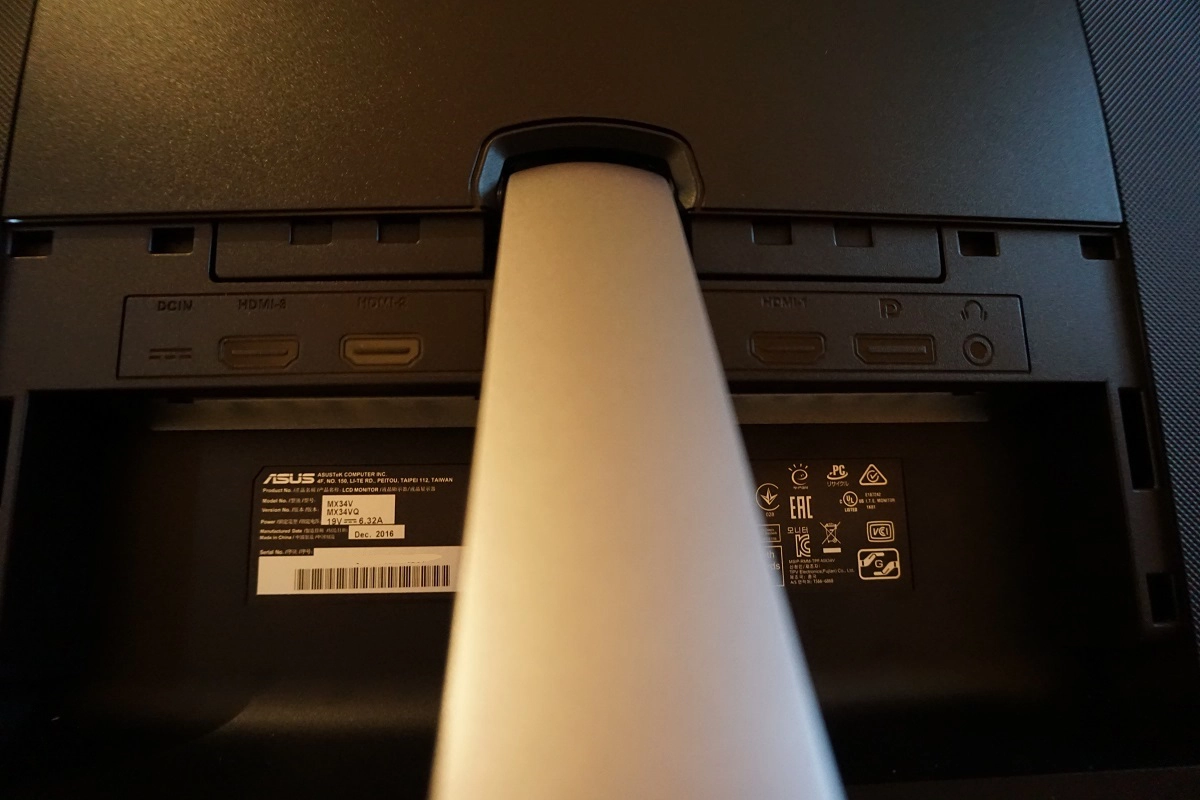
The monitor includes two down-firing 8W Harman Kardon (‘ASUS SonicMaster’) speakers. These are some of the best integrated speakers we’ve come across on a monitor. They are certainly ‘punchy’ with plenty of bass and volume, providing a far more enjoyable sound output than most of the rather bass-poor alternatives. As explored in the OSD video, there are various ‘AudioWizard’ audio settings; ‘Music Mode’, ‘Movie Mode’, ‘Gaming Mode’ and ‘User Mode’. We found the ‘Music Mode’ particularly bass-rich but preferred the overall balance in ‘Gaming Mode’ due to the superior clarity of the trebles and mid-tones. We’re hardly audiophiles, but we did actually enjoy using these integrated speakers whereas we’d usually avoid using integrated speakers where possible. The ‘User Mode’ also gives impressive control over the graphic equalizer settings, even if we were happy enough with the included presets.
Calibration
Subpixel layout and screen surface
As mentioned previously, this monitor uses a light matte anti-glare screen surface. It has a fairly smooth surface texture which keeps the image free from obvious graininess or ‘smearing’. There is some light graininess (it isn’t quite as smooth as 34” IPS models) but nothing too obtrusive. The screen surface also offers good glare-handling characteristics, avoiding reflections as you’d get with glossy screens for example.
![]()
As above the standard RGB (Red, Green and Blue) stripe subpixel layout is used. This is the default expected by modern operating systems such as Microsoft Windows and Mac OS. This means Mac users don’t need to worry about text fringing from non-standard subpixel layouts. Although the subpixels appear slightly squat, it didn’t seem to affect the sharpness as much as it did on older UltraWide VA models like the Samsung S34E790C. After optimising using ClearType, sharpness was fairly similar to IPS-type and TN models of similar pixel density. Some users may also like to keep ‘VividPixel’ on ‘25’ (default) for a very slight edge in sharpness as well.
Testing the presets
The MX34VQ offers a range of ‘Splendid’ presets; ‘Standard Mode’. ‘sRGB Mode’, ‘Scenery Mode’, ‘Theater Mode’, ‘Game Mode’, ‘Night View Mode’, ‘Reading Mode’ and ‘Darkroom Mode’. Most of these presets simply upset the image by causing uncorrectable oversaturation, excessive sharpening, excessive softening or bizarrely cool white points. We will be focusing on just a couple of these and also looking at some other settings available such as the ‘Blue Light Filter’. The table below provides key readings from a Datacolor Spyder5ELITE and some general observations related to the image. The monitor was set to run for over 2 hours before these readings were taken and was left in its ‘Plug and Play’ state on a Windows 10 system without additional drivers or ICC profiles specifically loaded. The test system used a Club3D Radeon R290 royalAce FreeSync-compatible GPU connected via DisplayPort. We also tested with an Nvidia GTX 1070 and tested both GPUs via HDMI and made similar observations. Unless stated otherwise, assume factory defaults were used. The exceptions to this were that the monitor was set to 100Hz (did not impact the observations here) and that various adjustments were made for our ‘Test Settings’.
The monitor was kept in its ‘plug and play’ state without additional drivers or ICC profiles loaded. The test system used a Club3D Radeon R9 290 royalAce FreeSync-compatible GPU connected via DisplayPort. We also tested with an Nvidia GTX 1070 and found that the monitor worked in much the same way (aside from the lack of FreeSync support). Likewise, we tested using HDMI on both GPUs and noted similar performance, provided the colour signal was corrected as detailed in this article. In addition to ensuring the graphics driver is doing the right thing, there’s an additional setting in the ‘Picture’ menu of the monitor’s OSD called ‘HDMI Black Level’. Once you’ve got the graphics driver using the correct ‘Full Range 0-255 RGB’ signal you should change ‘HDMI Black Level’ from its default of ‘Normal’ to ‘Full’. Games console users should refer to the section of this article under the heading ‘How do I set up my monitor for console gaming’.
| Monitor Settings | Gamma (central average) | White point (kelvins) | Notes |
| Standard Mode (Factory Defaults) | 2.3 | 7235K | An obvious cool hue and fairly bright, but some good vivid and contrasting shades. Some shades appear just a touch too deep due to gamma handling (not alarmingly so). As is usual for a VA panel, perceived gamma varies at different points of the screen – some saturation loss towards the extreme edges and bottom of screen, but this is really very minor for a VA model of this size. |
| sRGB Mode | 2.3 | 6530K | White point better balanced, although the green channel is a bit weak (slight purple tint) and contrast reduced somewhat. Image well balanced overall with good shade depth and variety. |
| Reading Mode | 2.3 | 5250K | This is a ‘Low Blue Light’ (LBL) setting with significantly reduced blue light output. The image appears warm, dim and soft – designed to mimic reading on paper rather than a computer screen. Sharpness can be manually adjusted (‘50’ is the default outside of this mode) and so can brightness. |
| Blue Light Filter = Level 1 | 2.3 | 6409K | Decreases white point somewhat compared to the factory defaults, but at around 6400K the blue light levels remain fairly normal. |
| Blue Light Filter = Level 2 | 2.3 | 6251K | Further reduction in white point, image appears a bit warmer. |
| Blue Light Filter = Level 3 | 2.3 | 5952K | Another reduction in white point, with the image looking quite warm at this point. White point is still >6000K so only a fairly weak ‘Low Blue Light’ setting. |
| Blue Light Filter = Level 4 | 2.3 | 6409K | As above but white point reduced further to around 5900K. This setting also locks off brightness and sets it to a low value – the image appears dim and warm. Due to the weaker blue colour channel and decreased brightness this is a reasonably effective ‘Low Blue Light’ setting – but less so than ‘Reading Mode’. |
| Color Temp. = Normal | 2.3 | 7223K | Similar to factory defaults but green channel slightly weaker. |
| Color Temp. = Warm | 2.3 | 6456K | Fairly high brightness remains, but white point is nicely balanced and overall image appears rich and varied. |
| Test Settings (modified as below) | 2.3 | 6480K | Simply ‘Warm’ with reduced brightness. Image is vibrant with strong depth and shade variety. Gamma averages ‘2.3’ so there is a touch of extra depth in places, but nothing alarming. |
Out of the box the MX34VQ produced a vivid image with plenty of depth. There was a strong cool tint, fortunately easy to correct, and a little extra depth in places due to the ‘2.3’ average gamma. The monitor does not provide any ‘Gamma’ modes and none of the ‘Splendid’ modes have any such effect without upsetting the image in other ways. Fortunately, the gamma tracking was still quite close to the ‘2.2’ curve, as you can see below for our ‘Test Settings’. There is a touch of deviation, mainly for some mid-tones, but many users would actually like this touch of extra depth. Shades are still reproduced faithfully and the gamma handling is perfectly suitable for general usage. Any user who requires a higher level of accuracy would really need to use their own colorimeter/spectrophotometer to frequently calibrate and re-calibrate the monitor, regardless of native gamma handling.
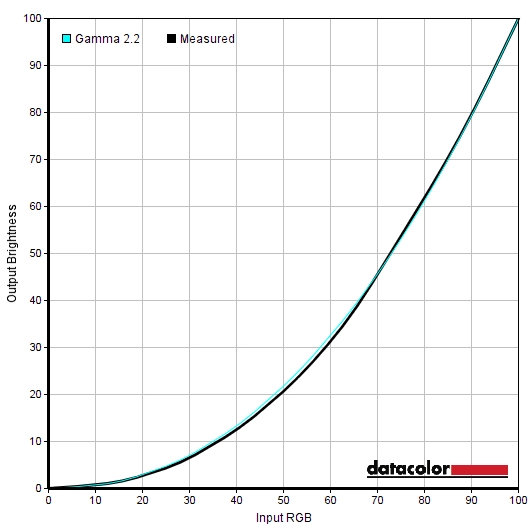
Gamma 'Test Settings'
The monitor also provides a range of ‘Low Blue Light’ (LBL) settings, the most effective of which was ‘Reading Mode’. You can also apply varying degrees of blue light reduction by using the ‘Blue Light Filter’. Although none of these modes proved as effective as the ‘Reading Mode’, they also don’t lower the white point as much and therefore might be preferred by some users during the daytime. For relaxing evening viewing we found ‘Reading Mode’ to be excellent, although preferred to up the sharpness from ‘0’ to ‘50’. It is nice that the monitor offers that sort of flexibility, though, and users should experiment with all of these LBL settings and see what works for them.
Test Settings
For our ‘Test Settings’ we lowered the brightness and changed the ‘Color Temp.’ setting to warm. There was no need for manual colour channel adjustments on our unit, but note that individual units vary. We also set the monitor to 100Hz in Windows and to facilitate that, had it running with ‘DisplayPort Stream’ set to ‘DP 1.2’. We have also included the ‘Trace Free’ setting used, just for reference. Additionally, we disabled the ‘VividPixel’ sharpness-boosting feature – although the difference between the default of ‘25’ and ‘0’ is very slight really and some users may prefer ’25’. Any setting not mentioned here, including contrast, was left at default. Color Temp.= Warm Trace Free= 60 VividPixel= 0 (according to preferences) DisplayPort Stream= DP 1.2 Refresh rate= 100Hz (Windows setting)
Brightness= 60 (according to preferences and lighting)
Contrast and brightness
Contrast ratios
A BasICColor SQUID 3 (X-Rite i1Display Pro) was used to measure the luminance of white and black using a range of settings. From these values, static contrast ratios were calculated. This data is shown in the table below, with black highlights indicating the highest white luminance, lowest black luminance and peak static contrast ratio recorded. Blue highlights indicate the results under our ‘Test Settings. Except for the changes already mentioned in the calibration section or this table, assume defaults were used.
| Monitor Settings | White luminance (cd/m²) | Black luminance (cd/m²) | Contrast ratio (x:1) |
| 100% brightness | 279 | 0.11 | 2536 |
| 80% brightness (Factory Defaults) | 242 | 0.09 | 2686 |
| 60% brightness | 188 | 0.07 | 2686 |
| 40% brightness | 141 | 0.06 | 2350 |
| 20% brightness | 90 | 0.04 | 2250 |
| 0% brightness | 36 | >0.01 | <3600 |
| sRGB Mode | 176 | 0.10 | 1760 |
| Reading Mode | 71 | 0.04 | 1775 |
| Blue Light Filter = Level 1 | 230 | 0.10 | 2300 |
| Blue Light Filter = Level 2 | 228 | 0.10 | 2280 |
| Blue Light Filter = Level 3 | 226 | 0.10 | 2260 |
| Blue Light Filter = Level 4 | 86 | 0.04 | 2150 |
| Color Temp. = Normal | 219 | 0.09 | 2433 |
| Color Temp. = Warm | 204 | 0.09 | 2267 |
| Test Settings | 163 | 0.07 | 2239 |
The average contrast ratio with only brightness adjusted was 2502:1, excluding the value for ‘0% brightness’ where the black point measurement lacked sufficient accuracy. This does not quite reach the specified 3000:1, but isn’t too far off really and offers similar performance to the eye. It’s certainly beyond the sort of contrast that non-VA LCD technologies can currently achieve and gives a fairly deep and inky look to darker shades. The contrast was reduced slightly with the ‘Blue Light Filter’ active, but remained >2000:1. It dropped further with the stronger adjustments made in ‘Reading Mode’ and also to ‘sRGB Mode’. The latter is a bit curious as it isn’t an emulation setting and doesn’t offer an advantage over modes of the monitor with stronger contrast performance. Following the adjustments made to our ‘Test Settings’, a static contrast of 2329:1 was recorded which is respectable.
The monitor includes a Dynamic Contrast setting called ASCR (ASUS Smart Contrast Ratio), which can be activated in the following ‘Splendid’ modes; ‘Scenery’, ‘Theater’, ‘Game’, ‘Night View’ and ‘Darkroom’. This allows the backlight to adjust its intensity based on the levels of light or dark on the screen. As usual, the backlight is controlled as a single unit and can’t have different sections at different brightness levels. The mode was effective in adjusting the backlight brightness quite rapidly to changing scenes, but as usual we prefer manual control over monitor brightness.
PWM (Pulse Width Modulation)
This monitor does not use PWM (Pulse Width Modulation) to regulate backlight brightness. Instead, DC (Direct Current) dimming is used, which means the backlight is considered flicker-free. This will come as welcome news to those sensitive to flickering or other side-effects from PWM.
Luminance uniformity
We observed a black background in a dark room and observed some backlight bleed and clouding towards the bottom of the monitor, as you can see below. It’s worth remembering that individual units vary when it comes to backlight bleed and as the best light-blockers, VA models are generally relatively strong in this area. The image below was taken from a sufficient distance to eliminate so-called ‘VA glow’. This is a silverish or slightly purple glow that is visible towards the bottom corners of the screen from a normal viewing angle. From more extreme viewing angles, it blooms out more noticeably. This is nowhere near as obvious as ‘IPS glow’ and does not eat away at dark detail in the same way from a normal viewing position. The luminance uniformity of the screen was not great. The brightest point recorded was ‘quadrant 5’ in the centre of the screen (161.1 cd/m²). The greatest deviation from this occurred at ‘quadrant 1’ towards the top left of the screen (130 cd/m², which is 17% dimmer than centre). A 17% deviation was also recorded at ‘quadrant 4’ to the left of centre (133.3 cd/m²). Elsewhere recorded brightness was within 9 – 16% of the brightest point. Note that individual units vary when it comes to uniformity and that further deviation can be expected beyond the measured points. The following contour map represents these deviations graphically, with darker greys representing lower luminance (greater deviation from the brightest point) than lighter greys. We also measured the colour temperature (white point) uniformity of the same 9 quadrants. Deviations here are assigned DeltaE values, with higher values showing greater deviation from the 6500K (D65) daylight white point target than lower values. A value above DeltaE 3 is considered significant deviation that some users would readily notice by eye. The results here were reasonable. Significant deviations were recorded towards the bottom left and bottom right, respectively (DeltaE 3.3 and 3.2, respectively). These are only just above the threshold of what is considered ‘significant deviation’, and this deviation wouldn’t be considered significant when compared to the central point. As above, individual units vary when it comes to uniformity and you can expect deviation beyond the measured points. It’s also worth bearing in mind that slight shifts in colour temperature can be observed on VA models such as this due to viewing angle weaknesses, which aren’t reflected by recorded values. On Battlefield 1 (BF1) the contrast performance was pleasing. The overall atmosphere in dark scenes was good thanks to the strong static contrast and good depth to dark shades. There was a little ‘VA glow’ towards the very bottom of the screen, causing some of these shades to appear slightly lighter, but nothing anywhere near as obtrusive or noticeable as ‘IPS glow’. There was also ‘black crush’ in the central region of the screen, whereby some dark shades appear even darker than they should and blend into a sort of black mass. This is typical for VA panels (related to gamma behaviour) and was quite minor on this issue – some subtle details were less distinct as a result of this, but overall detail levels were still respectable. The strong contrast also helped give vegetation and objects in the game clearly defined structure – for example the joins in brickwork, cracks in the ground and pores of rocks contrasted nicely with the rest of the object. Lighter elements such as muzzle flashes and flames contrasted very nicely against darker surroundings. The screen surface also gave only slight graininess to such elements rather than any heavy or smeary graininess. The contrast performance was strong on Dirt Rally. The strong static contrast helped with an atmospheric rendition of night time, which on this game can be quite dark. There was again slight ‘VA glow’ near the bottom of the screen, but the lack of far more obtrusive ‘IPS glow’ was very welcome. There was also some ‘black crush’ as observed on BF1 – tire tread patterns, for example, were more distinct when they were displayed near the edges of the screen rather than the centre. This was again fairly minor, especially given the width of this panel. Bright elements such as car headlights and even other light sources such as the moon in the sky contrasted very nicely with the surrounding darkness. These brighter shades had only slight graininess from the screen surface, appearing reasonably smooth. We also tested the Blu-ray of Star Wars: The Force Awakens. The strong static contrast again aided the look of this film, with plenty of scenes showcasing this nicely. Flames, explosions, burning projectiles and glowing light sabers stood out very nicely in the darkness. The level of detail in the dark areas was good overall, with the minor ‘black crush’ doing little to detract from the overall cinematic look of the film. Lagom’s contrast tests were used to analyse specific weaknesses in contrast performance which may not have been identified during other testing. The following observations were made. The MX34VQ’s colour gamut (red triangle) was compared to the sRGB colour space (green triangle) as shown below. The monitor completely covers sRGB (100%) with some over-extension in the green and red region of this diagram. This is sufficient to provide a touch of extra vibrancy without introducing obvious oversaturation, so a good balance for sRGB gaming and general content consumption. It also delivers potentially accurate colour reproduction, although users who wish to use the monitor for colour-sensitive work should be aware of the VA viewing angle related ‘colour consistency’ issues highlighted elsewhere in the review. Colours on Battlefield 1 (BF1) were displayed in an impressively vivid and varied way. There was only quite minor saturation loss towards the edges and bottom of the screen, especially for a VA model of this size, so the overall look remained rich. There were some impressively vivid greens for vegetation displayed alongside subtle variations of lighter shades. The distinction of these individual shades was affected by the gamma and saturation shifts attributable to slight viewing angles typical on VA panels, but not to a great degree. There were also good neutral greys and browns displayed without unwanted tints or an obvious loss of saturation. Fire and explosions were also impressively vivid, without appearing obviously oversaturated or too strong in their red hue. Dirt Rally also showed good vibrant and varied shade representation. The racing environments looked much as they should, with a rich variety of green and brown shades. Some of these deep greens looked particularly luscious, whilst there were plenty of khaki colours displayed alongside in an appropriately muted way. The car liveries showcased some impressive rich reds, deep blues and neon greens (amongst others) – especially appealing where brighter shades were painted against a darker background. There was again some saturation lost towards the flanks and bottom of the screen, but nothing alarming and nothing that really prevented a rich and varied look overall. To wrap up, we tested colour reproduction on the Blu-ray of Futurama: Into the Wild Green Yonder. With large blocks of individual shade, this is a particularly good test for shade consistency. In this respect the monitor did rather well, particularly given the panel type and size of the screen. The saturation shifts were more apparent on this title than the games tested above due to the large areas of individual shade. One of the key characters Dr. Zoidberg, who is a red lobster-like creature, appeared more of a burnt red near the bottom and the sides of the screen. In the centre he appeared a more striking and rich red. Subtle variations of shade (slightly different character skin tones, for example) lost a bit of identity as well, displayed less consistently due to these saturation shifts. But the performance here was still quite good, with superior distinctions compared to TN models and actually compared to many VA models as well. Overall the film looked much as it should. There were distinct and brilliantly vibrant neon shades, impressive deep shades and a good variety of pastel shades. Nothing looked obviously out of place and there was plenty of vibrancy and variety. We used Lagom’s tests for viewing angle to analyse colour consistency and the influence of viewing angle in a more specific way. The following observations were made from a normal viewing position, around 70cm from the screen. Perceived changes in gamma and saturation can be more pronounced if you sit closer to the screen. Using a sensitive camera and small tool called SMTT 2.0, we compared the latency of the MX34VQ with a range of monitors of known latency, taking over 30 repeat readings to enhance accuracy. Using this method, we measured 6.03ms (over 1/2 of a frame @100Hz) of input lag. As usual for a monitor, the ‘Game Mode’ setting had no influence on this value. It is influenced by both the element of input lag you see (pixel responsiveness) and feel (signal delay) and indicates a low signal delay that even sensitive users shouldn’t fine. We don’t have the means to accurately measure input lag whilst FreeSync is active, but as explored the felt responsiveness was very good with this enabled. In this article we explore the factors affecting monitor responsiveness. Chief amongst these is the concept of ‘perceived blur’ and how it is influenced both by what the monitor is doing (i.e. pixel responsiveness) and blur caused by eye movement as you track motion on the screen. We also introduce a photography technique called ‘pursuit photography’ which captures motion on a monitor in a way that reflects both elements of perceived blur. The following images are pursuit photographs taken using the UFO Motion Test for ghosting, with the test running at 960 pixels per second. This is a good practical speed for such photography and reflects both elements nicely. The monitor was tested with TF (Trace Free) set to all possible values and at both 60Hz and 100Hz. Note that the UFO moves across the screen from left to right at a frame rate matching the refresh rate. All three rows of the test are analysed (i.e. a dark, medium and light cyan background), showcasing a broad range of pixel transitions. We’ve also included a reference shot at both 60Hz and 100Hz. This is taken using the medium cyan background on a Dell S2417DG, showing how things look on a monitor with very rapid pixel responses and very little overshoot (inverse ghosting). It is therefore a useful benchmark to compare against, even though it is a very different monitor which few can match in terms of responsiveness. Note that any interlacing patterns are moiré from the camera rather than an issue with the monitor itself. At 100Hz the object itself appeared narrower and more sharply focused, indicating a significant reduction in perceived blur attributable to eye movement. At ‘TF = 0’, there is moderate trailing behind the object for the dark background and medium background. This is reduced a fair bit for the light background. At ‘TF = 20’ the trailing is similar for the dark background, very slightly weaker for the medium background and weaker but replaced by a little overshoot for the light background. At ‘TF = 40’ there was little change with the dark background. The trailing for the medium background was very slightly weaker, whilst the light background had a touch more overshoot (but nothing strong or obtrusive). At ‘TF = 60’ the trailing was reduced just a touch for the dark background, particularly behind the cockpit region. For the medium background the trailing was now a bit weaker again, whilst the light background remained quite similar. At ‘TF = 80’ some overshoot was introduced behind the cockpit for the dark background, but the trailing behind the UFO body remained similar. The trailing was cut down for the medium background, instead replaced with a bit of overshoot. For the light background the overshoot was considerably stronger now, with an obvious bright ‘halo’ trail of inverse ghosting. At ‘TF = 100’ the dark background showed stronger overshoot behind the cockpit but little change elsewhere. The medium background showed a bit of extra overshoot, whilst the light background showed a further strengthening of overshoot as well. From this analysis and indeed considering a broader array of pixel transitions, we feel that the default value of ‘TraceFree = 60’ provides an optimal balance between good pixel responsiveness and reasonable levels of overshoot. This is certainly the case at 100Hz, although things are less clear-cut at 60Hz due to the stronger overshoot introduced compared to lower values. Although it would have been too time-consuming to fully document the results at 75Hz as well, we did make some observations at this refresh rate. The pixel response behaviour was some way between what it was at 60Hz and 100Hz, with moderate overshoot in places. Since most of our testing is done at 100Hz, we’ll be sticking with the default setting of ‘60’. We shall be considering a range of refresh rates below that in the FreeSync section, however. On some monitors, typically those with high refresh rates, there may be artifacts visible when viewing moving content on the screen. These may appear as a sort of mesh or interference pattern, with woven or interlaced lines of alternating shade that’s slightly lighter or darker than the intended shade. No such artifacts were visible on this monitor during motion. There was a small amount of static interlacing towards the bottom of the monitor if you looked closely, but this was very faint – too faint to notice when gaming or sitting a normal distance from the monitor. You could see some shades appear as very thin bands of a slightly lighter and slightly darker than intended shade. On Battlefield 1 (BF1) the monitor provided a surprisingly responsive 100Hz experience, where the frame rate kept up. The ‘connected feel’ was very good, with a level of fluidity and precision when interacting with the game world that felt just like a low-latency 100Hz monitor should. And far beyond what any 60Hz monitor delivers. The perceived blur was also greatly reduced by the increased refresh rate and frame rate output, with an extra two thirds of the visual information being presented to the user every second compared to a 60Hz display. There were some weaknesses in pixel responsiveness, but nothing we found particularly bothersome for most transitions. Overall levels of perceived blur were increased somewhat compared to a very fast 100Hz monitor (the S2716DG we were using as a reference, set to 100Hz, for example). But this was just due to a bit of extra trailing in places, a sort of ‘thin and powdery’ trail rather than the usual heavy smearing that some slower VA models produce. Akin to what we saw on high refresh rate AHVA models (such as the AOC AG271QG) for darker transitions, but affecting a broader range of transitions on the MX34VQ. The overclocked IPS UltraWides like the ASUS PG348Q also suffer similar trailing in places. Most users wouldn’t notice it or find it bothersome. There were some more noticeable weaknesseses, particularly for the high-contrast pixel transitions involving very bright or dark shades moving alongside significantly brighter or dimmer shades. There were no obvious smoke-like trails or obvious smearing, fortunately, but a bit of extra trailing here and there. This was again more powdery and short-lived in nature rather than bold extended trailing. The most obvious example was a bit of ‘break-up trailing’ where dark shades with a slight hue (for example very rich brown woods, which have a slight red hue to them) appear with a more colourful trail behind them. In this case a dark red. This was short and not particularly bright or eye-catching as far as such trailing goes. There was also a bit of overshoot where some lighter shades were involved, but this was quite unobtrusive (no obvious eye-catching bright halo trails, funky colours or dark and inky inverse ghosting). The video below highlights these weaknesses and some further weaknesses discussed in relation to FreeSync shortly. Overall we found the responsiveness of the ASUS MX34VQ impressive. There were some weaknesses here and there, but the pixel responsiveness was far superior to what we’d seen from high refresh rate VA UltraWides like the Acer Z35 and AOC C3583FQ. Individual sensitivity to weaknesses in pixel responsiveness (both trailing and overshoot) varies. But to us the weaknesses tended to be relatively minor rather than eye-catching or bothersome things, leaving you with a highly satisfying 100Hz gaming experience. AMD FreeSync is a variable refresh rate technology supported by certain AMD GPUs (including these ones and future models). This is similar in what it achieves to Nvidia’s G-SYNC variable refresh rate technology, but it does not require a special proprietary board/chip integrated into the monitor. Instead, AMD FreeSync uses the VESA Adaptive-Sync protocol, which is a capability integrated into some DP 1.2a and HDMI 1.4a or HDMI 2.0 port controllers. The DP and HDMI ports of the MX34VQ, for example. The idea of variable refresh rate technologies such as this is to allow the GPU to report the current frame rate at which it’s running to the monitor, and for the monitor to dynamically adjust its refresh rate to match (where possible). The advantages of this compared to a static refresh rate that does not necessarily match the frame rate are explored in the G-SYNC article linked to previously. At a basic level, it eliminates the tearing and juddering (VSync off) or stuttering (VSync on) that ordinarily occurs where the frame rate departs from the refresh rate. There is also a reduction in input lag compared to running with VSync on – although we aren’t able to accurately measure this. Our test system uses a Club3D Radeon R9 290 royalAce FreeSync-compatible GPU. This GPU does not support HDMI 2.0, so we were unable to properly test the FreeSync functionality via HDMI. The technology did work correctly via DP 1.2a on this GPU, however. This technology was activated automatically when we first connected up the display. To double-check this is the case, open ‘AMD Radeon Settings’ and click ‘Display’. You should then ensure that the first slider, ‘AMD FreeSync’, is set to ‘On’. If you hover over this, it will also report the variable refresh rate display supported by the display. Note that the image below is for a different monitor and is just used here for reference. The variable refresh rate range supported by this monitor via DP 1.2a is 48 – 100Hz. It should theoretically be the same when using HDMI 2.0, but as mentioned above we did not have such capability on our AMD GPU so were unable to test this. Above the refresh rate ceiling for FreeSync (100Hz, corresponding to 100fps in a game), the GPU respects your selection of ‘VSync on’ or ‘VSync off’ in the graphics driver. With ‘VSync on’ the frame rate will not be allowed to rise above 100fps, with VSync activating at this point and bringing with it the usual latency penalty when it does so. With ‘VSync off’ the frame rate is free to rise above 100fps, but the monitor will simply stay at 100Hz and therefore tearing and juddering will be present. VSync is configured in the ‘Gaming’ section of ‘Radeon Settings’, where it is referred to as ‘Wait for Vertical Refresh’. This can either be set globally under ‘Global Settings’, or independently for each separate game title. The default is ‘Off, unless application specifies’ which means that VSync will only activate if it is selected in the game itself (if there is such an option, which there usually is). The in-game option might not necessarily be called ‘VSync’ but may be referred to as ‘sync every frame’ or something along those lines. Most users will likely want to enable VSync when using FreeSync to ensure that they don’t get any tearing. One of the final two options in the list, shown in the image below, would therefore be preferable. Below the floor of FreeSync operation (48Hz), the monitor employs AMD LFC (Low Frame Rate Compensation) when FreeSync is active – regardless of VSync setting. Note that the requirement of the maximum supported refresh rate being 2.5x the minimum mentioned in that document is no longer valid – it is simply 2.0x that is required now. The monitor’s refresh rate will try to stick to multiples of the frame rate when the frame rate dips below 48fps. Say for example the frame rate was 30fps, the monitor would run at 60Hz. This effectively combats the tearing and stuttering that would occur if the monitor simply stayed at a static 48Hz (or 100Hz). Be aware that the monitor displays the current refresh rate towards the top right of the OSD (e.g. 3440 x 1440@ 100Hz). If FreeSync is active and the frame rate fluctuates, the refresh rate displayed here will also change ‘on the fly’ to reflect this. You can display this information on-screen by using the ‘FPS Counter’ feature, one of the three ‘GamePlus’ options. Although this is called ‘FPS Counter’, it simply reflects the refresh rate of the monitor and will therefore only work to ‘count FPS’ if FreeSync is active. It is therefore a useful indication that the technology is working as intended. You will also see LFC in action if you compare this value (refresh rate) with the actual frame rate, once the frame rate falls below 48fps. Although we tested a broad range of game titles, and found FreeSync useful to varying degrees on all of them, we will simply focus on Battlefield 1 (BF1). This title provides good flexibility with graphics settings, allowing a great range of frame rates to be tested. Using our usual settings which we were happy to use, the Radeon 290 pumped out anywhere between around 50 – 100fps, generally sticking to around 70 – 80fps. Without FreeSync active, these considerable fluctuations in frame rate give (to us) obvious tearing and juddering with VSync disabled and obvious stuttering with VSync enabled. There is a loss of continuity in the experience because of this. With FreeSync active there were no such interruptions, which was very pleasant. If we raised the graphics detail then it was possible to get the frame rate to drop below the 45fps floor of FreeSync operation. At this point LFC worked its magic and stuttering and tearing was still kept at bay. Although FreeSync was certainly beneficial in getting rid of tearing and stuttering, it was still preferable to have the frame rate as high as possible. As frame rate decreases, perceived blur from eye movement increases. The ‘connected feel’ is also better the higher the frame rate, so this drops away as well. Another issue is that, as illustrated in the UFO Motion Test pursuit photographs earlier, more noticeable overshoot (inverse ghosting) creeps in at 60Hz compared to 100Hz. This is particularly true where light shades are involved in the transition – to give an in-game example, observing a dark wooden post against a bright blue or grey sky. This gives a ‘halo’ (bright trail) that is marginally brighter than the sky shade at 100Hz (100fps). It doesn’t simply ‘change’ in its appearance at 60Hz, it actually becomes increasingly noticeable the further refresh rate drops from 100Hz (i.e. the further frame rate drops from 100fps in the game, with FreeSync). So for example is a bit more noticeable at 80fps, more noticeable again at 70fps and even more noticeable at 60fps. 45fps is the point at which it is most noticeable, and it really is quite bright and eye-catching, although confined to just a few transitions luckily. Below that, LFC kicks in and the refresh rate of the monitor rises again. Again, this is tied to the actual refresh rate the monitor is running at rather than the frame rate itself. We also noticed some flickering on the monitor between about 45 – 50Hz (45 – 50fps), with higher refresh rates being free from the issue – including when LFC kicks in below 45fps and the monitor reverts to a higher refresh rate. It is not uncommon to see FreeSync-compatible monitors which have their pixel overdrive tuned most tightly for their maximum refresh rate (in this case 100Hz). And for overshoot or other weaknesses to become more apparent at lower refresh rates. This is something that G-SYNC monitors tend to do better, with Nvidia specifically involved in tuning the pixel overdrive across a range of refresh rates. We don’t feel the overshoot was particularly obnoxious even at the low end of the FreeSync scale on this model, but individual sensitivity to this does vary. This model does at least provide a good level of flexibility, and some users might prefer a lower ‘Trace Free’ setting if they’re frequently hitting those lower refresh rates. This reduces the overshoot at the expense of a bit of extra conventional trailing, as demonstrated earlier. With the FreeSync experience being nice if a bit rough around the edges, it sort of ties in with why Nvidia GPU users shouldn’t be put off this monitor. FreeSync is only ever a bonus, it does not replace the desirability for the high frame rates to make the most of the 100Hz capability of the monitor. Where performance is indeed optimal. For multiplayer gaming on Battlefield 1, for example, we found the superior performance of our overclocked Nvidia GTX 1070 to be preferable to our Radeon 290, even with the option of enabling FreeSync. That’s because we could use settings which provided a visually attractive experience but allowed a fairly consistent 100fps to be achieved. In which state the fluidity, lack of obvious overshoot and ‘connected feel’ was very pleasant. In this article we explore the 3440 x 1440 resolution and talk about the experience on the desktop, in movies and in games. We won’t be repeating too much of this. A notable addition to the MX34VQ, compared to the flat screen featured in the article, is the 1800R curve. This is steeper than the curve found on previous curved UltraWides we’ve reviewed, such as the Samsung S34E790C but identical to the curvature of some more recent curved models such as the Samsung C24FG70 and C27F591FD. The wide screen makes good use of this curvature, we feel. Panel manufacturer Samsung claims that the curve makes the viewing experience more natural by creating a more uniform viewing distance between the centre and edges of the screen. We certainly found this model comfortable and natural to use, but never really found similar sized models with a lesser curve or no curve to be uncomfortable to use. The curve was easy to adapt to and we didn’t feel it made the desktop experience unusual. In fact once we got used to it, flat screens appeared slightly convex at first as the eyes have to adapt back to a flat rather than concave screen. We can see that designers or those who require geometric perfection in their content might prefer flat screens, but for general purpose desktop use we found the monitor good. The images below illustrate the sort of screen space you have at your disposal on this model and also highlight the curve. In the images the curve actually appears much more noticeable than when you’re sitting in front of the monitor using it, however. When gaming we again found the experience natural and found the 21:9 aspect ratio worked very nicely to enhance the Field of View in our favourite titles such as Battlefield 1 and Dirt Rally. Very much like viewing these games on a 27” 16:9 model, but with more content at the sides. The curve again felt very natural and we feel added a little bit of extra depth and immersion to the experience. Nothing extreme, just a slight feeling of being dragged into the game world a bit more. The images below are purely for illustrative purposes and give no indication of what the monitor looks like first hand. Again, the curve appears more pronounced when viewing the monitor on photos like this than when actually using the screen. This monitor does have an integrated scaler, but it only offers very basic scaling capabilities. Scaling is provided for resolutions that are common to certain external devices such as games consoles – the same resolutions that are listed under ‘Ultra HD, HD, SD’ rather than ‘PC’ in the Nvidia Control Panel, if you’re an Nvidia user. Interpolation is used to ensure every one of the 3440 x 1440 pixels is used, but there is no 1:1 pixel mapping option available. The 1920 x 1080 resolution therefore looks stretched and distorted, with moderate softening from the interpolation process itself. As a PC user, if you want to use a non-native resolution (such as 1920 x 1080 or 2560 x 1440) and don’t wish to have the image stretched across the screen, you should instead use the GPU scaling options available in the graphics driver. We won’t be exploring this as this capability is down to the GPU rather than monitor itself. What we will say, though, is that running the monitor at 2560 x 1440 (WQHD) with 1:1 pixel mapping via the GPU, is a useful fall-back for applications which don’t support the 21:9 aspect ratio. That is because black bars are displayed either side with the content displayed as an undistorted 27” 16:9 WQHD image in the middle. This resolution is already listed under ‘PC’ as an Nvidia user, but for our AMD GPU we had to create a custom resolution for this. The easiest way of doing this is to download a recent AMD graphics driver that includes ‘Radeon Settings’ (i.e. Radeon Software Crimson). Open ‘Radeon Settings’, click ‘Display’ and add a custom resolution as shown below. The only fields that need to be changed are ‘Horizontal Resolution (px)’ to ‘2560’ and ‘Timing Standard’ to ‘CVT’. With its curved UltraWide VA panel, the Samsung S34E790C provided an at the time rather unique experience which many users enjoyed. One of the key turn-offs for gamers was the limitations imposed by the 60Hz refresh rate. The ASUS MX34VQ is unusual amongst members of the ‘Designo’ series of monitors as it offers a 100Hz refresh rate. The panel is Samsung SVA, as with the older S34E790C, but now has a steeper curve at 1800R. We found the curve added a bit of depth to the experience without feeling unnatural or uncomfortable (quite the opposite, in fact). Aesthetically the monitor adopts the now familiar style of other ‘MX’ models in the Designo range, but this style comes at the expense of ergonomic flexibility with only tilt being offered. The lack of VESA holes will also annoy some users who were hoping to mount to a more flexible stand. Another reason for the lack of alternative mounting flexibility is that one of the ‘key features’ of the monitor is the Qi wireless charging unit integrated into the base. Seen as a bit of a gimmick by some and a nice little addition by others, we were swayed more towards the latter after seeing how much use we actually got out of this charger. Another integrated feature of the monitor worth a mention are the speakers. That is something that are often overlooked by monitor manufacturers, either entirely absent or so poor in their sound quality that they might as well be absent. In this case, though, they provided a much clearer and richer sound output than integrated speakers would usually provide. They are some of the best monitor speakers we’ve come across – and the addition of the ‘AudioWizard’ graphic equalizer settings to fiddle with also be welcomed by some tweak-happy users. Performance of the monitor itself was largely impressive. It delivered strong static contrast, as hoped, even if it did fall slightly short of the specified 3000:1. Things were very much as you’d hope from a decent VA model in terms of decent depth to dark shades and brighter shades which stood out nicely. This was particularly noticeable where bright shades were surrounded by darker ones – the look to the image there is something that non-VA LCDs simply can’t replicate. A light screen surface is used, which helps preserve vibrancy and clarity better than ‘stronger’ matte screen surfaces. Although it invited a degree of graininess, this was finer and not as obvious as on some matte surfaces. We were able to achieve a pleasing balance to the colour after a few basic tweaks in the OSD, with gamma that averaged ‘2.3’ rather than ‘2.2’ – but a rich and inviting look for gaming and general usage we feel. This vivid look was further aided by the generous colour gamut, which did not stray as far as Adobe RGB or other wide gamut standards but did extend a bit past sRGB. Although ASUS certainly didn’t shout about this capability from the rooftops, or even mention it in a particularly obvious way on their product pages, one of the key capabilities of the monitor is the 100Hz refresh rate. And overall, we feel the monitor did a very solid job at delivering a convincing and enjoyable 100Hz performance. There were some weaknesses in pixel responsiveness here and there, but nothing as obnoxious as many VA models suffer from. There was also a touch of overshoot, but this was fairly light at 100Hz and not something we found distracting. The ‘connected feel’ and overall level of perceived blur was really very impressive for a VA model – and unlike some high refresh rate VA models (the likes of the Acer Z35) we felt the monitor really did make good use of the refresh rate. The monitor also supports AMD FreeSync, which did its thing to eliminate tearing and stuttering in variable frame rate environments. There was stronger overshoot as the refresh rate of the monitor decreased (whether manually set or achieved via FreeSync) and some issues with flickering at the lower end of the FreeSync range (specifically 45 – 50Hz or 45 – 50fps in a game). As always, we found the experience most enjoyable at higher frame rates and see FreeSync as a bonus on this one rather than a key feature. Indeed, our greatest enjoyment during multiplayer gaming came from our more powerful Nvidia GPU. This could could deliver a solid 100fps without requiring any drastic image-quality destroying graphical tweaks on titles like Battlefield 1. Overall, we found this to be a very enjoyable monitor to use for a slew of uses, including relatively high frame rate gaming. We liked the overall style and found some of the integrated features such as the Qi charger and integrated speakers to be surprisingly useful. The lack of ergonomic freedom was less useful, however. Something we hope won’t put users off who are on the fence about this monitor, but still a point worth raising. Given the price of competing high refresh rate 3440 x 1440 UltraWide models, the price point of this model is perhaps equally as head-turning as the monitor’s style. As with any monitor, it’s not perfect, but there’s certainly a lot to like about this one. The bottom line; a stylish monitor with some neat integrated features and surprisingly good gaming performance.
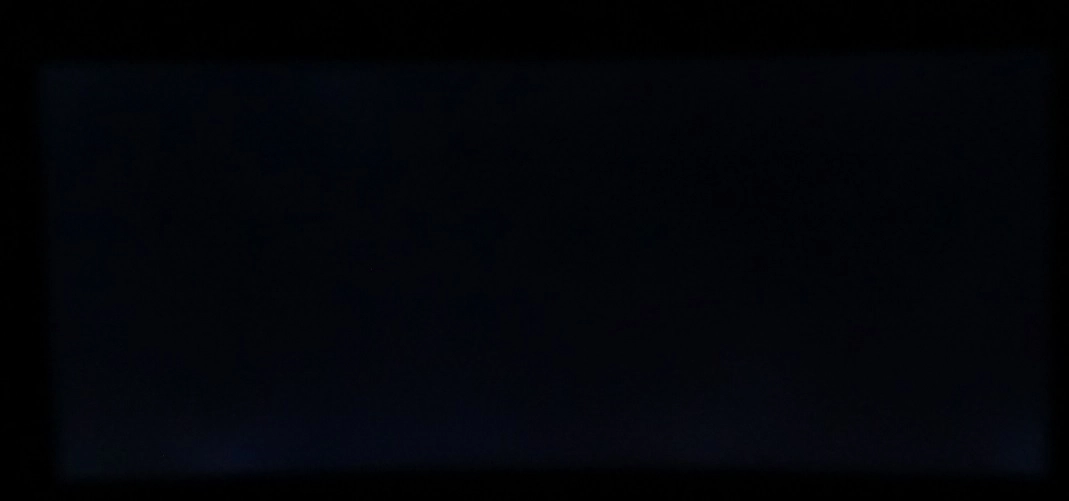
The Spyder5ELITE was used to analyse the uniformity of 9 equidistant white quadrants running along the screen from top left to bottom right. The following table shows the luminance recorded at each quadrant alongside the percentage deviation between each quadrant and the brightest point recorded.

Luminance uniformity table
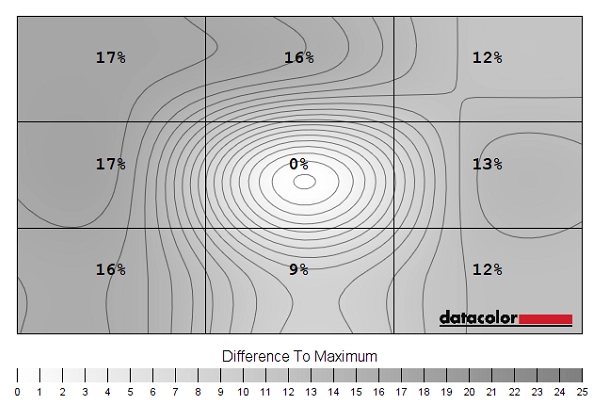
Luminance uniformity map
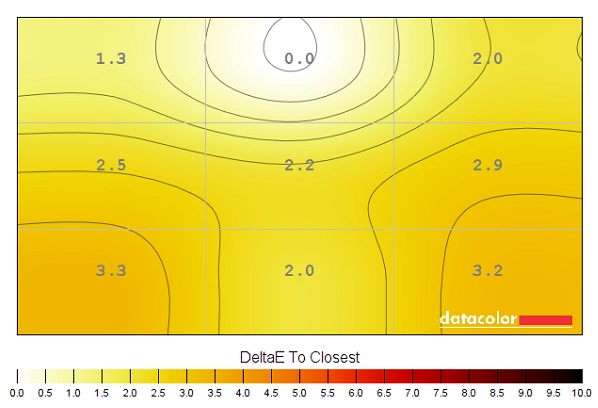
Colour temperature uniformity map
Contrast in games and movies
Lagom contrast tests
Colour reproduction
Colour gamut
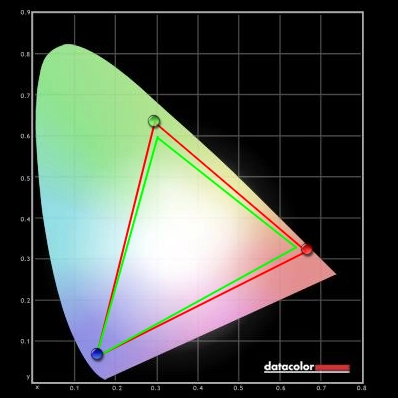
Colour gamut 'Test Settings'
Colour in games and movies
Viewing angles
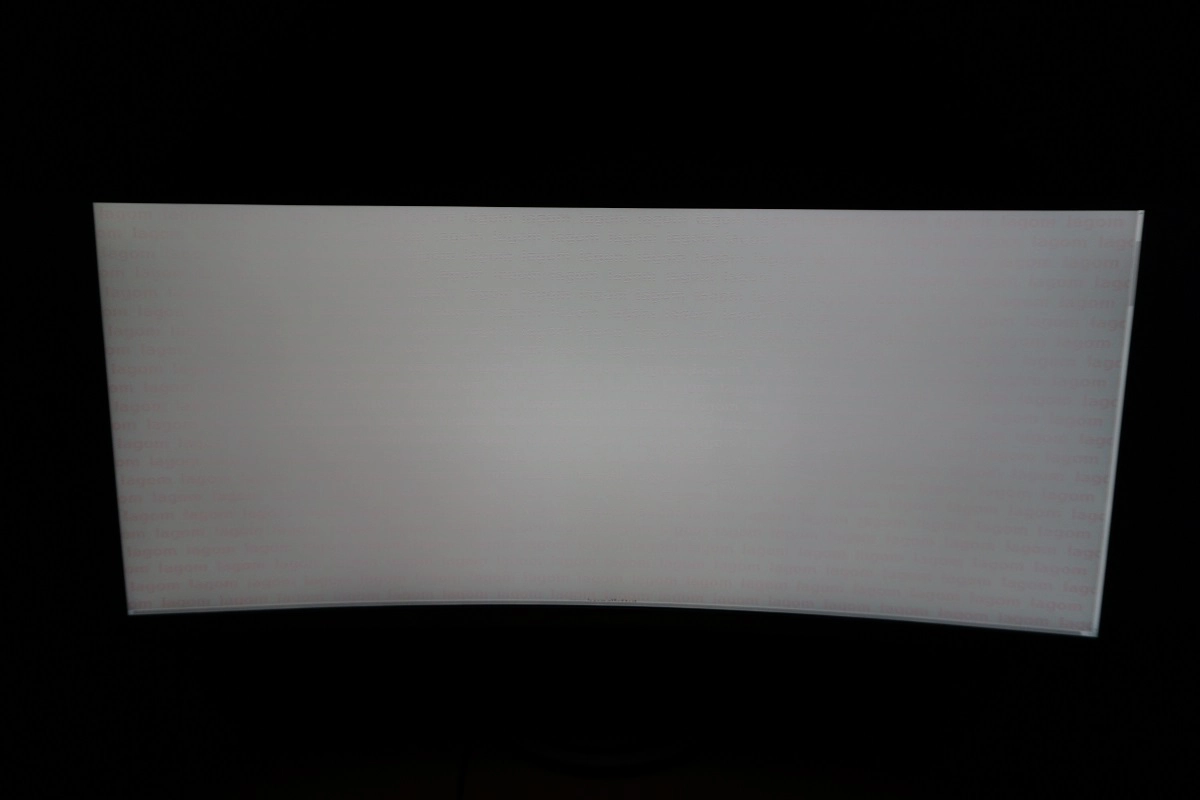
The video below shows this text test, a mixed desktop background and dark desktop background from a variety of viewing angles. From more extreme angles in particular there is a brightening of the image and loss of contrast (this may not be entirely clear in the video). Vertically in particular the performance is considerably stronger than TN (Twisted Nematic) panels as there are no extreme shifts or colour inversion. In the final section of the video you can see the aforementioned ‘VA glow’, which blooms out from sharper angles. This is not as obvious as ‘IPS glow’ from any viewing angle, however.
Responsiveness
Input lag
Perceived blur (pursuit photography)
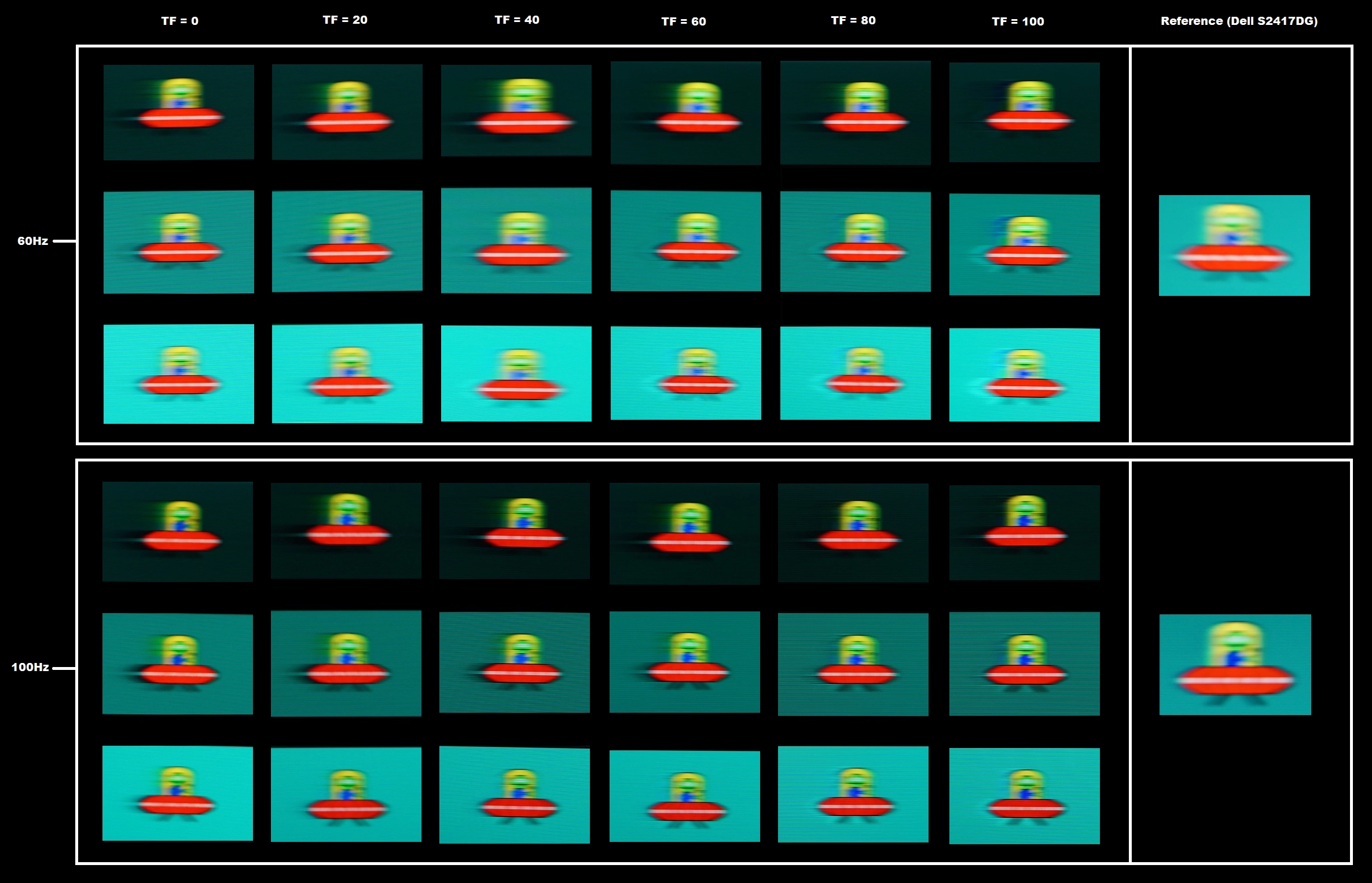
At 60Hz there was a moderate degree of blur to the object itself, with the soft and wide look reflecting a relatively high level of perceived blur from eye (camera) movement. With ‘TF = 0’, there was a fair degree of trailing behind the object itself with the dark and to a lesser extent medium background. The light background showed little trailing, which is good. At ‘TF = 20’ there was very little change, whilst ‘TF = 40’ reduced trailing for the medium background and introduced a touch of overshoot. The overshoot was more pronounced for the light background, with a bright ‘halo’ trail of inverse ghosting visible. At ‘TF = 60’ the trailing for the dark background was cut down slightly, particularly behind the yellow cockpit, but still moderate. Both the medium and light backgrounds had slightly stronger overshoot. At ‘TF = 80’ the dark background remained much the same, whilst the overshoot was stronger for the other backgrounds. At ‘TF = 100’ there was very strong overshoot for all backgrounds, including the dark background where the trail took on an inverted inky look.
Interlace pattern artifacts
Responsiveness in games and movies
Dirt Rally provided a similar experience, which is to say quite a solid 100Hz performance. Where the frame rate kept up, the ‘connected feel’ was very good with inputs translating to vehicle movement in a snappy way. The level of perceived blur was also greatly reduced compared to on even the fastest 60Hz LCDs. There were again some weaknesses here and there, particularly when driving at night where high-contrast transitions were common. There was a bit of extra trailing here and there, but nothing like the smeary or distracting mess that many VA models output in similar scenarios. The level of perceived blur, even here, remained superior to the fastest 60Hz LCDs. There was no eye-catching overshoot either, just a bit here and there that most users wouldn’t notice or be bothered be. We also tested our Blu-ray test titles, and no weaknesses specific to this monitor were highlighted. The frame rate is limited to ~24fps on these, so the pixel response requirements are nowhere near as stringent as when viewing higher frame rate content such as games. Likewise, the 100Hz refresh rate doesn’t provide any benefit over 60Hz here.
FreeSync – the technology and activating it
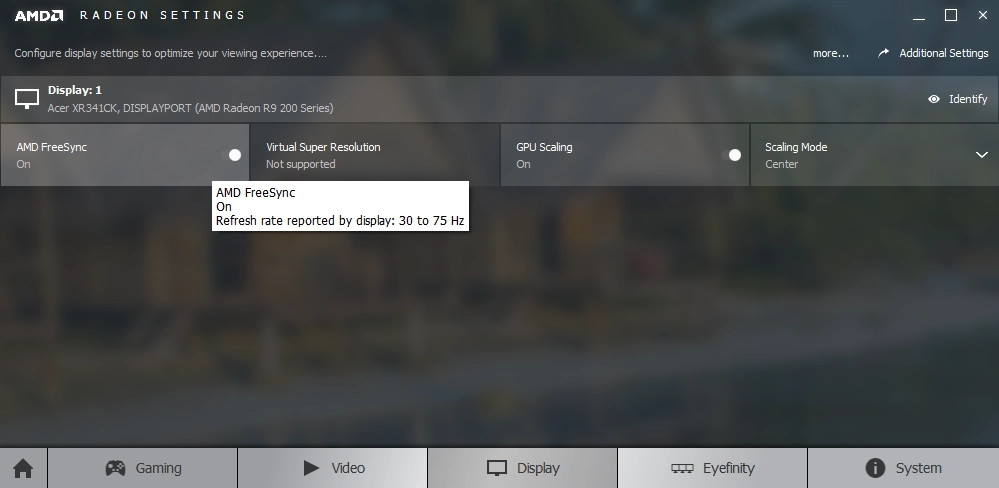
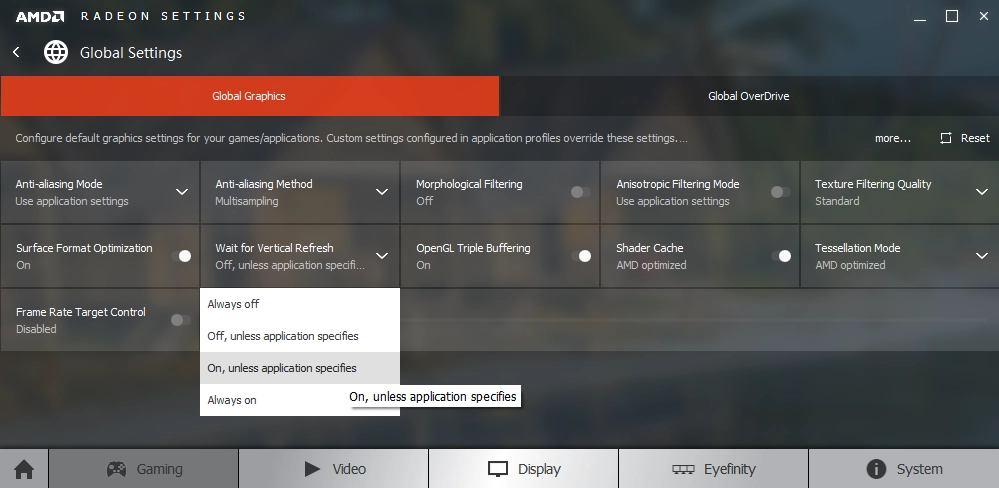
FreeSync – the experience
The 34” 3440 x 1440 curved ‘UltraWide’ experience
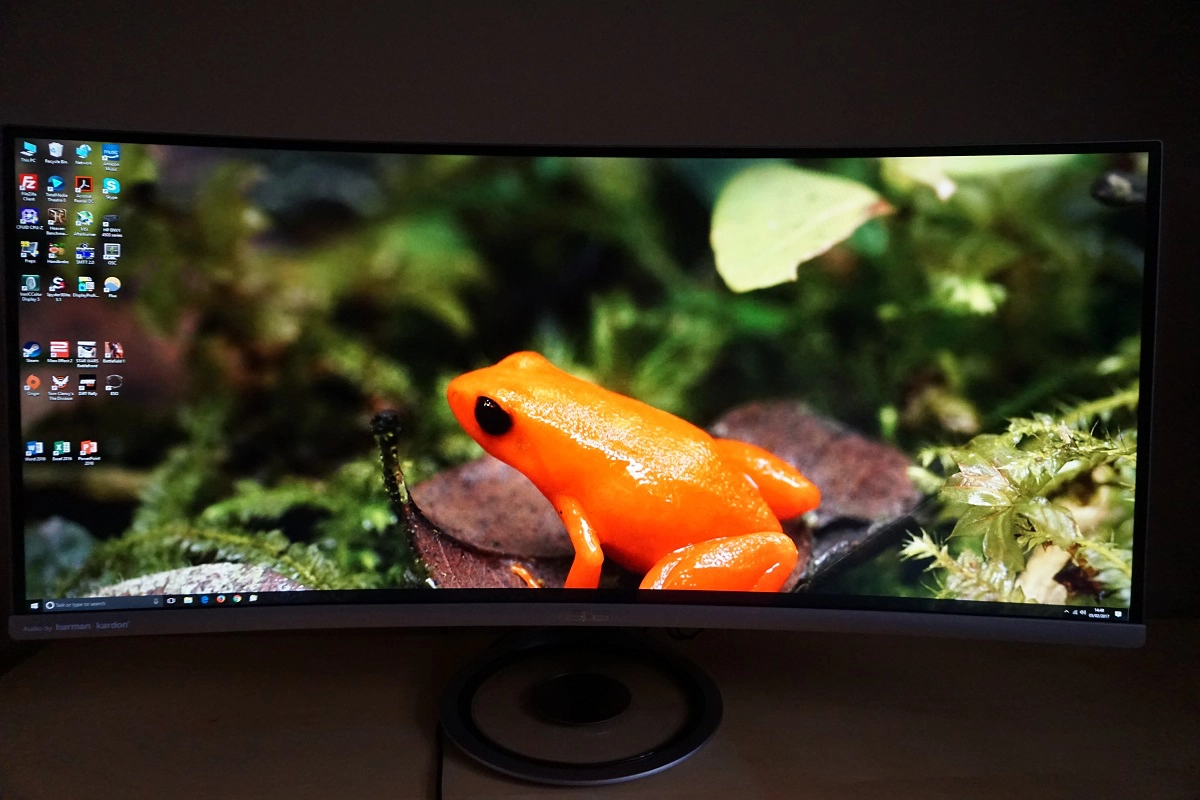
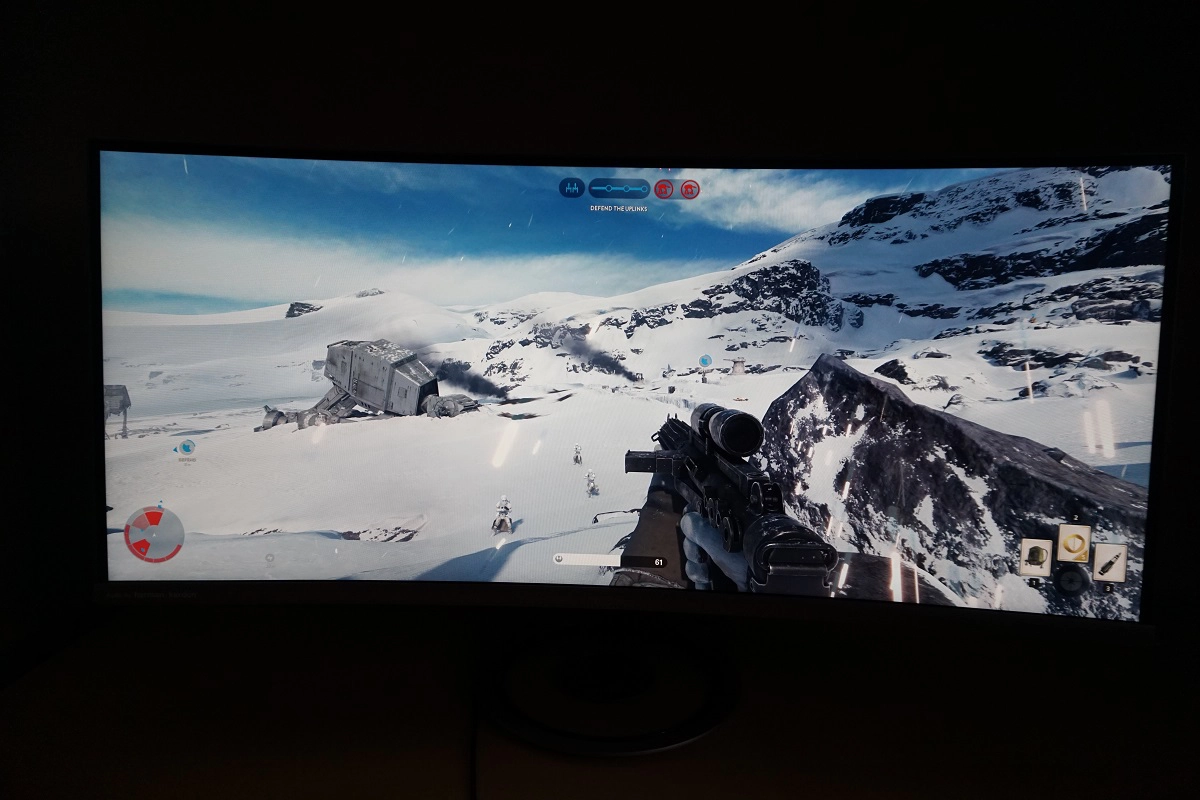
Interpolation and upscaling
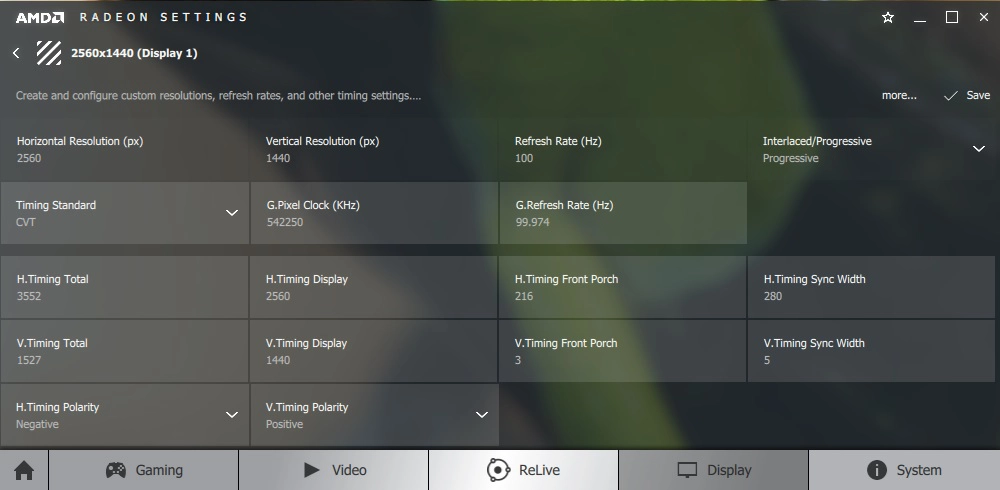
Conclusion
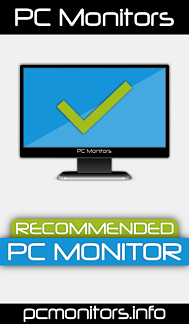
Positives Negatives Pleasing image balance with some basic OSD tweaks, with the screen surface, panel type and colour gamut also adding to a vivid and inviting look
As is usual for a VA panel, some saturation was lost towards the edges and bottom of screen, but less than you might expect from such a wide VA model
Strong static contrast and a light matte screen surface free from obtrusive graininess Not quite as smooth as the screen surface used on 34” IPS-type panels. There was also a small amount of ‘black crush’, but as with the saturation shifts this was relatively minor for a VA monitor Low input lag and surprisingly good pixel responsiveness overall, delivering a pleasing 100Hz gaming experience. FreeSync also supported on compatible AMD GPUs
Some weaknesses in pixel responsiveness here and there and a bit of light overshoot, becoming stronger at lower refresh rates
A nice aspect ratio and resolution for entertainment purposes we feel and a comfortable pixel density and good amount of screen space for work. The curve added a bit of depth to the experience without making things look weird – and the Qi charger, speakers and overall design were nice touches
Limited ergonomic flexibility and a lack of VESA holes will put some users off
![]()
